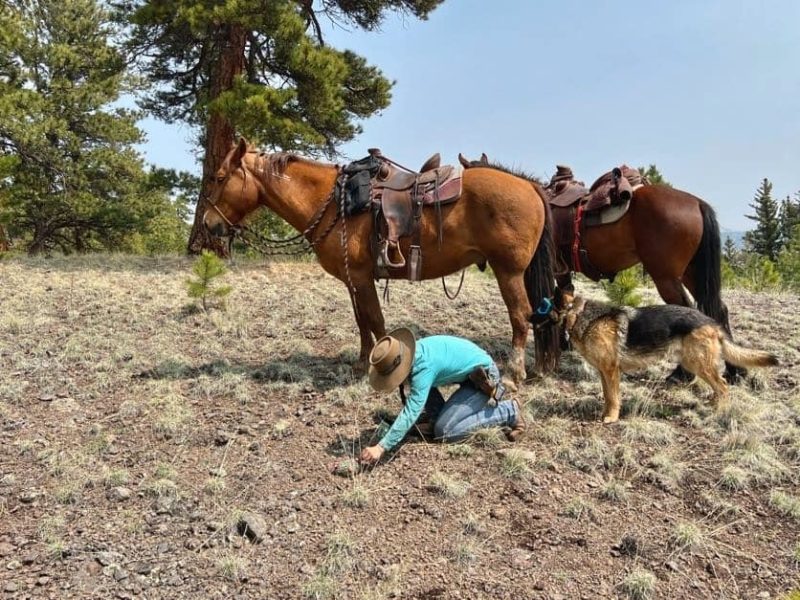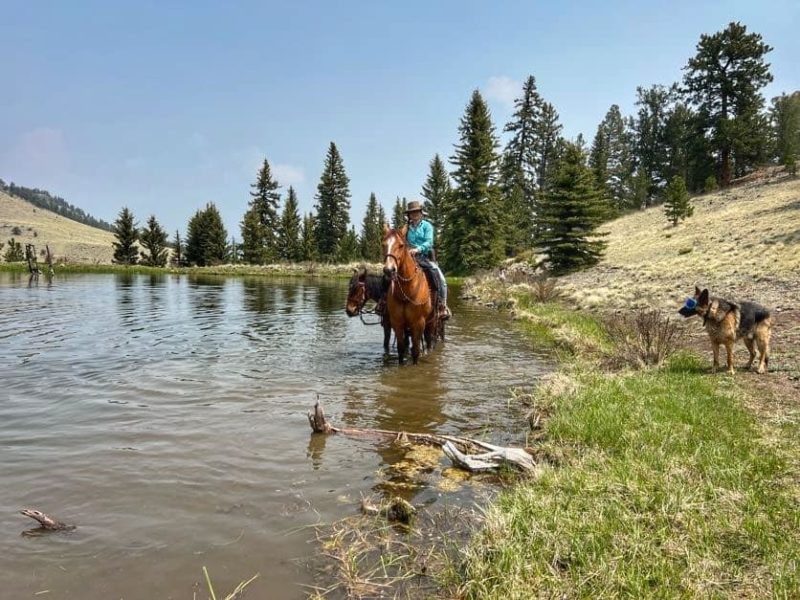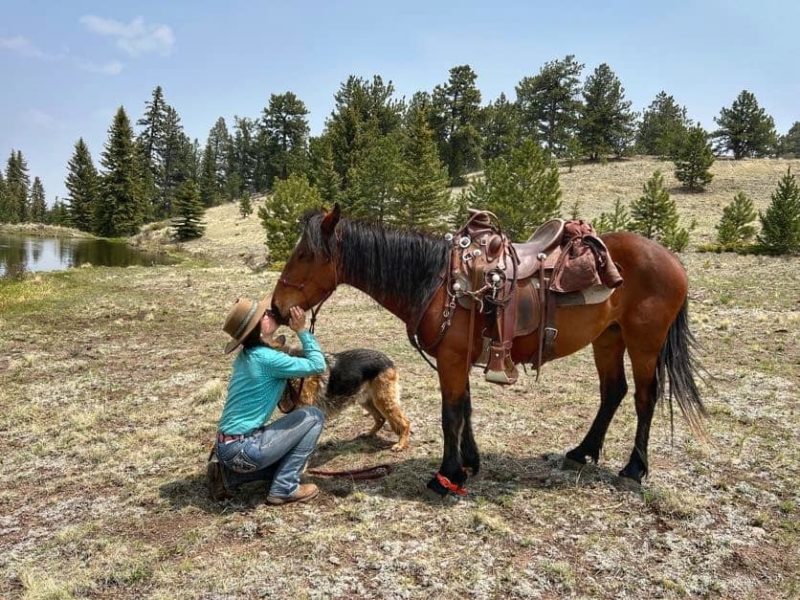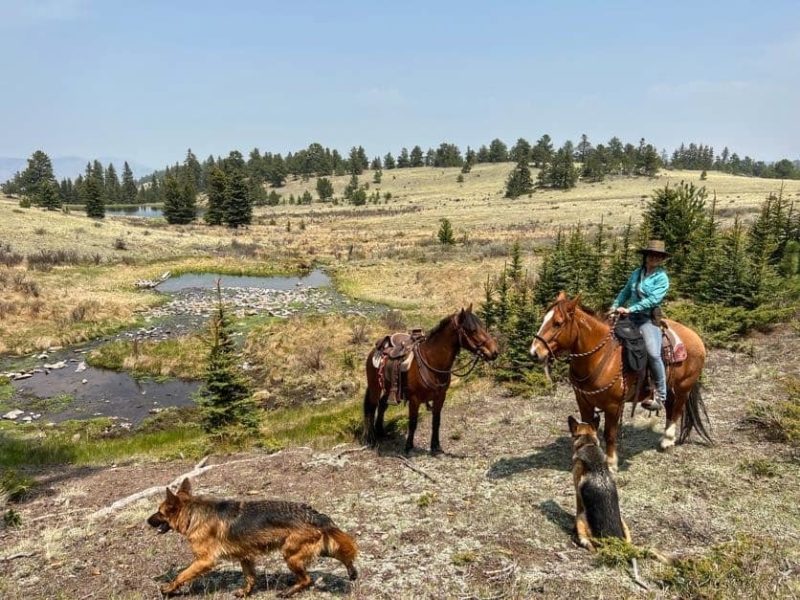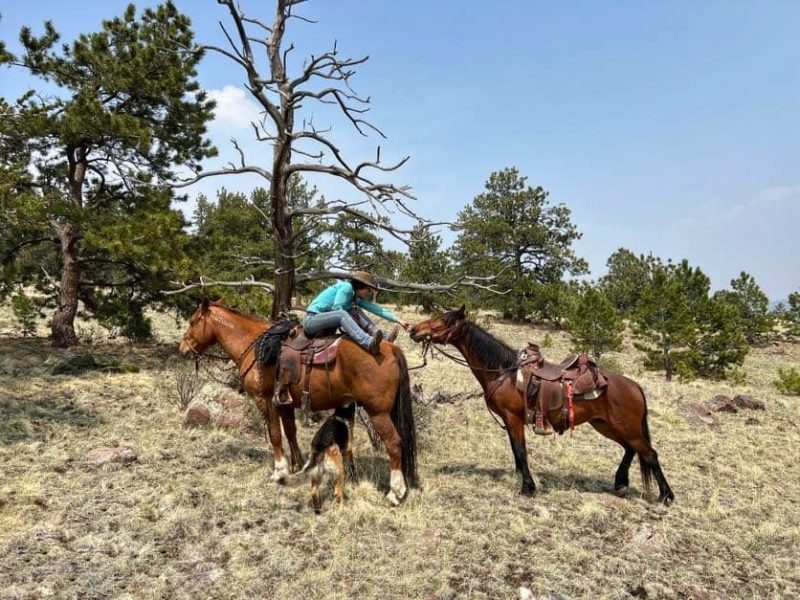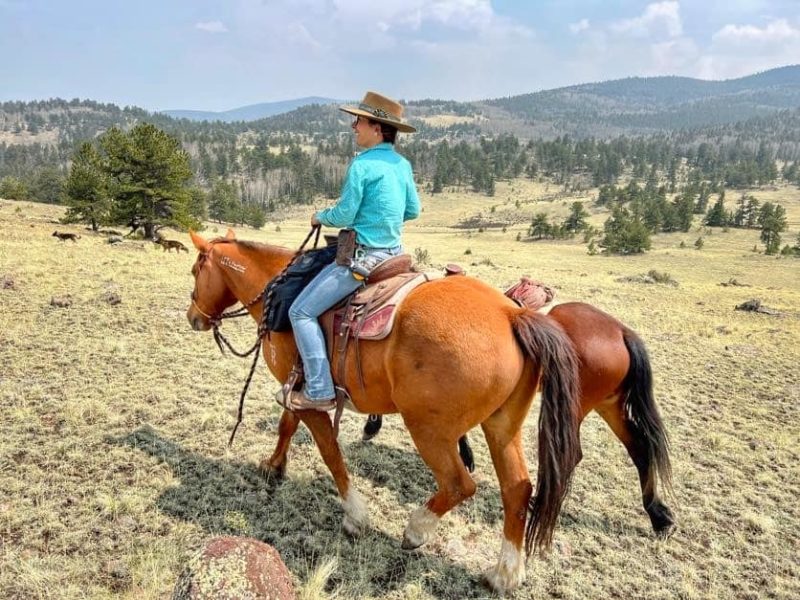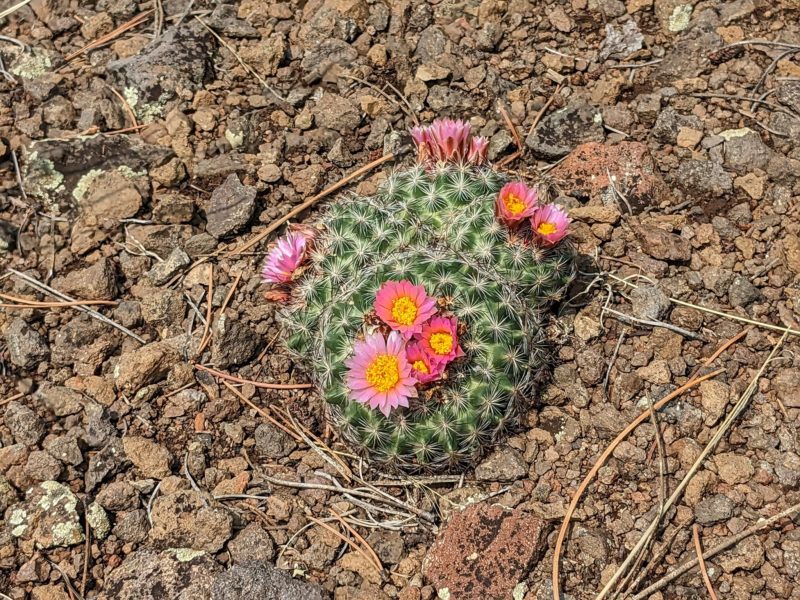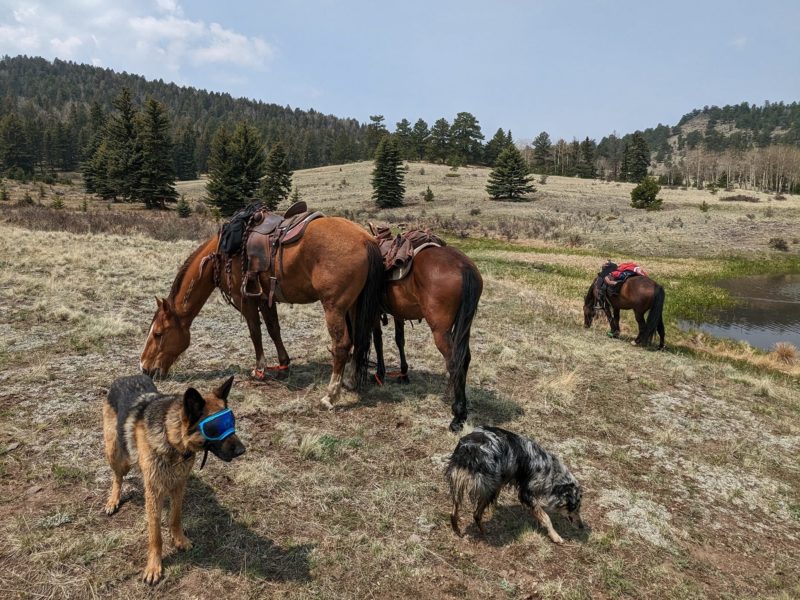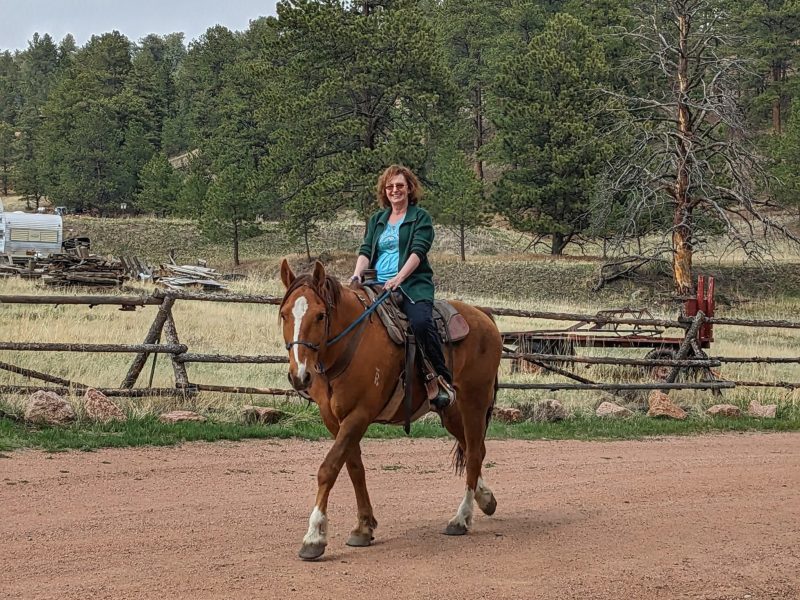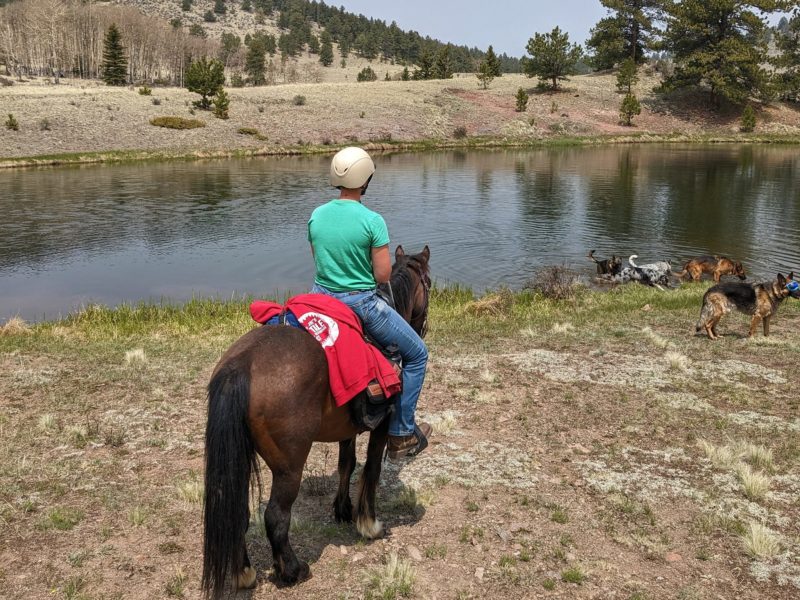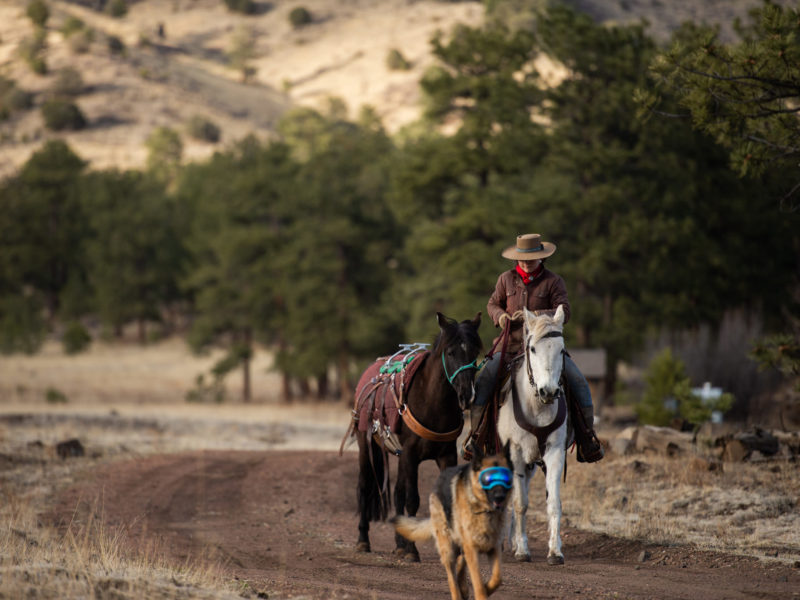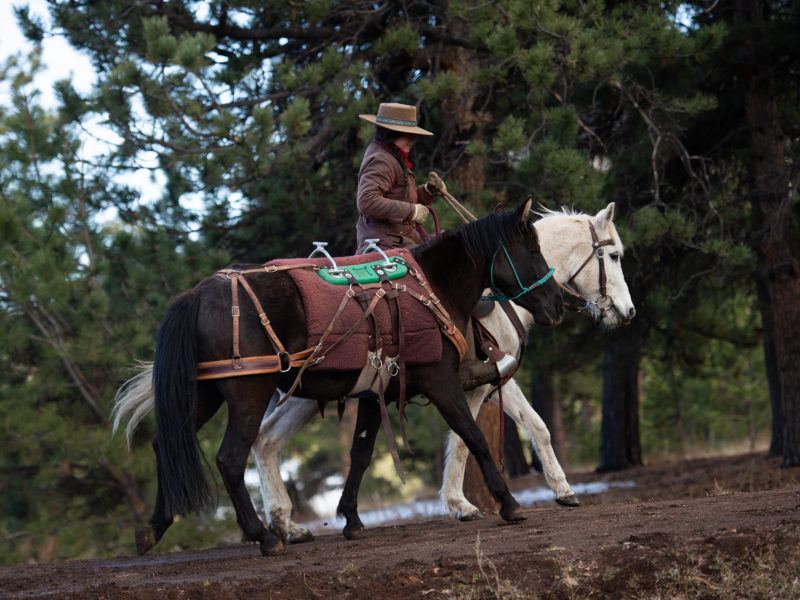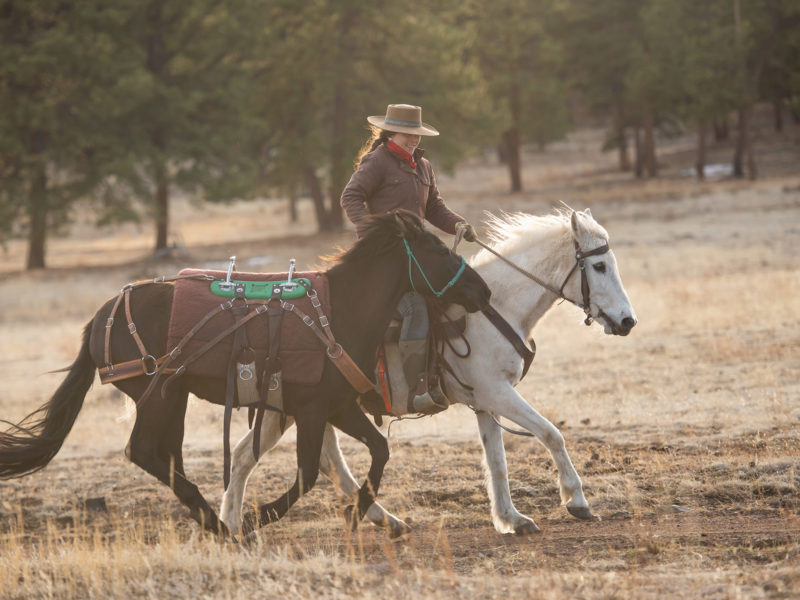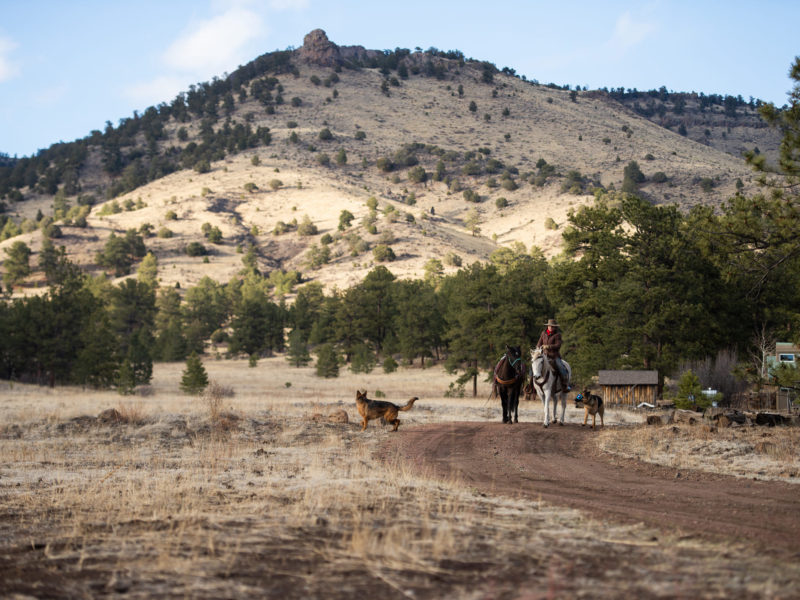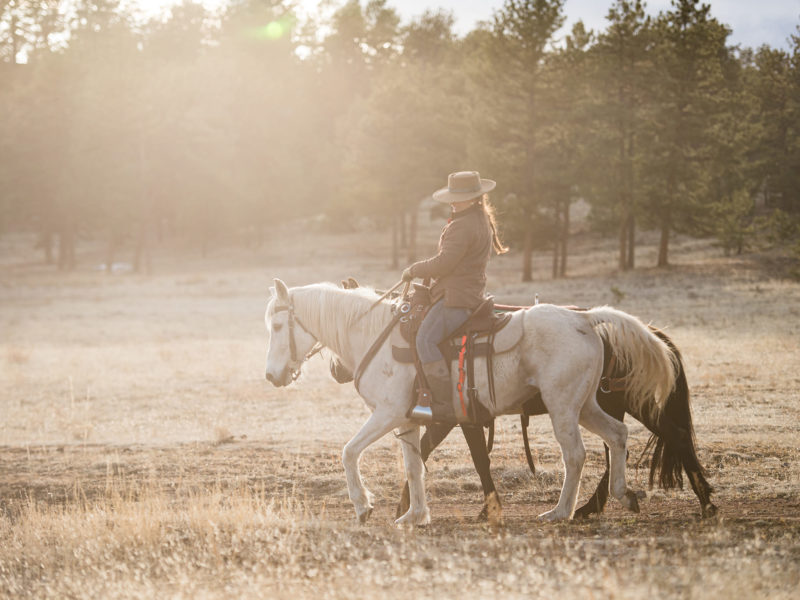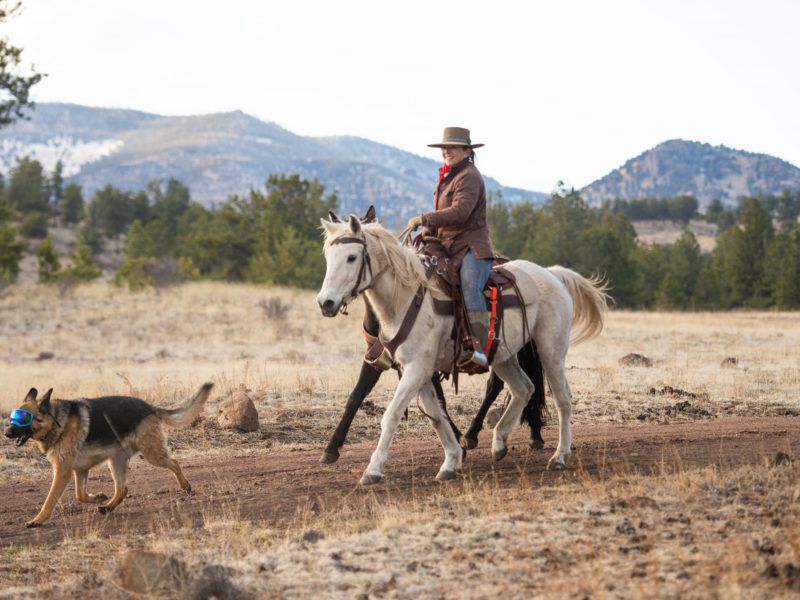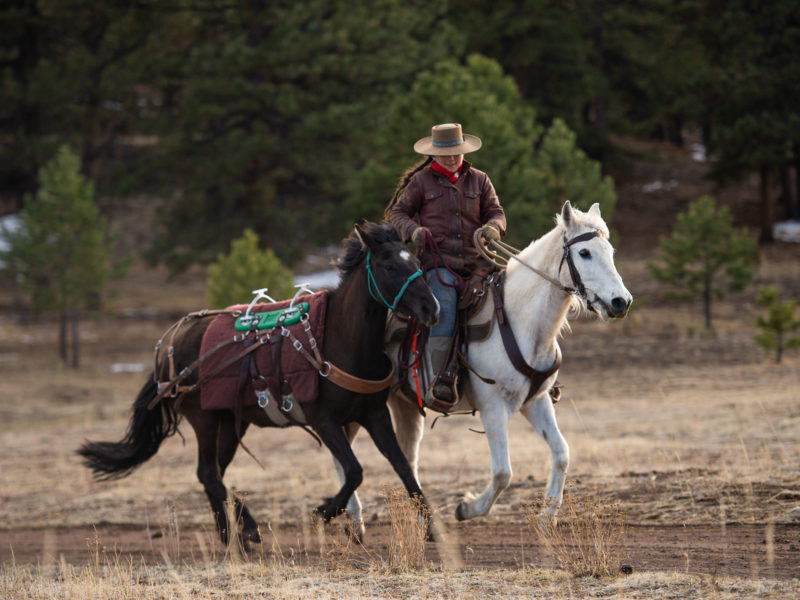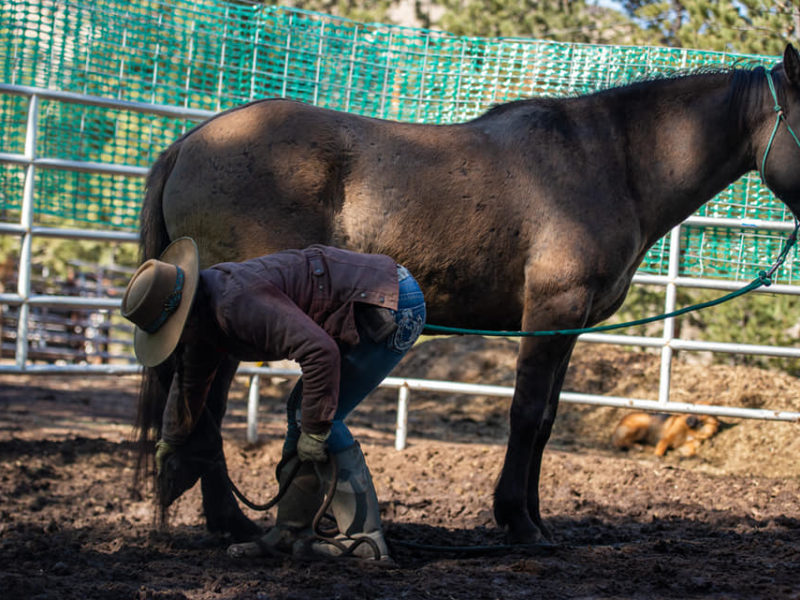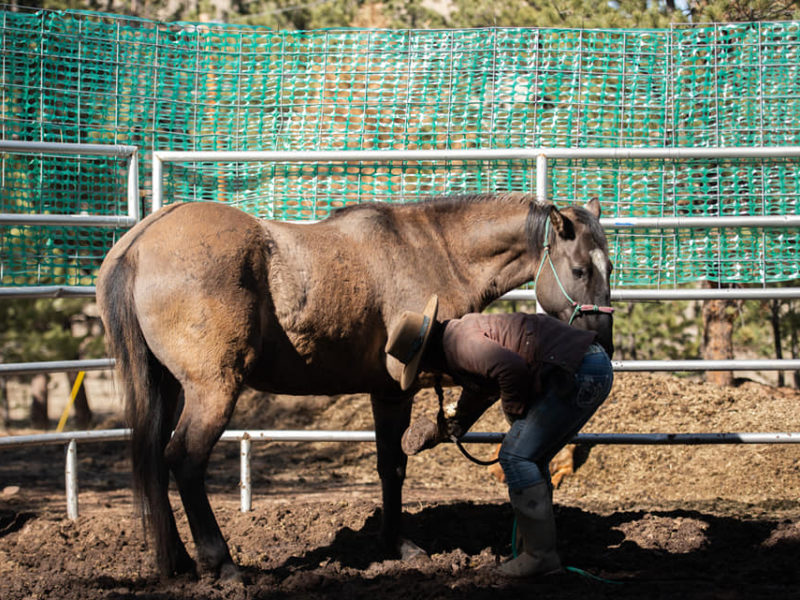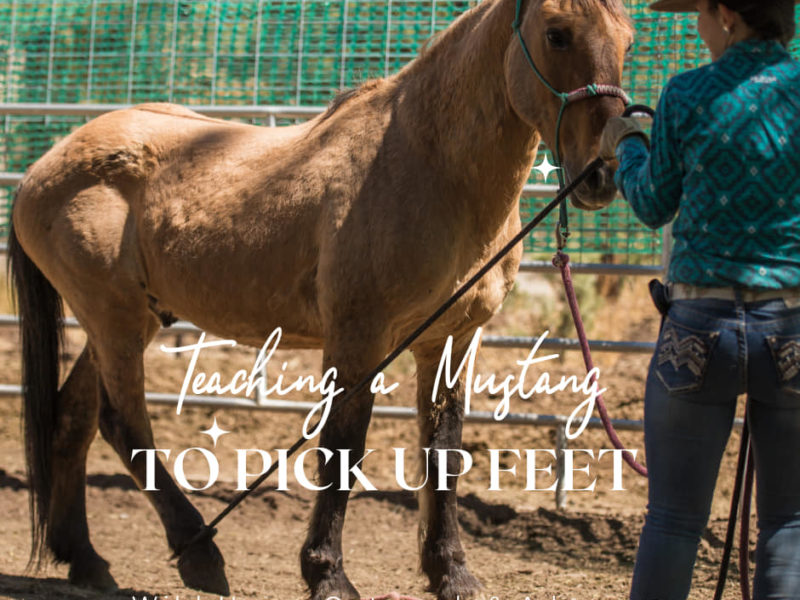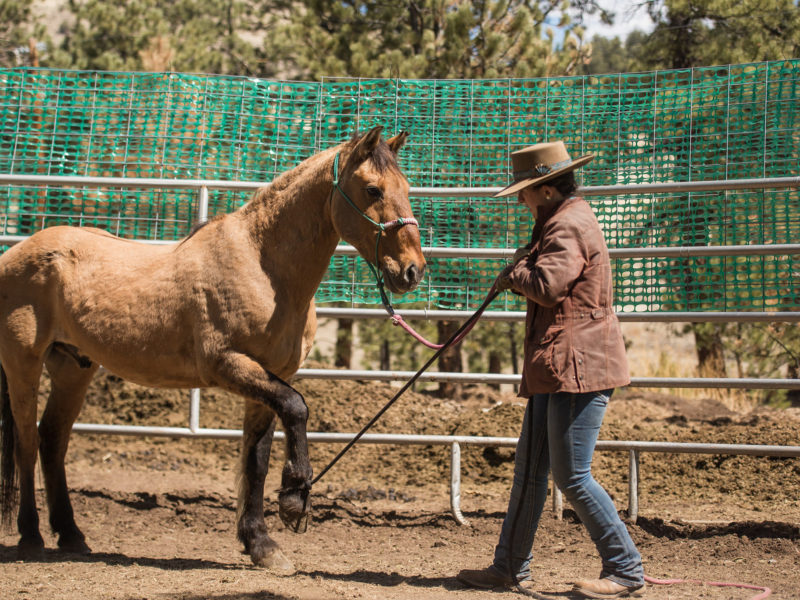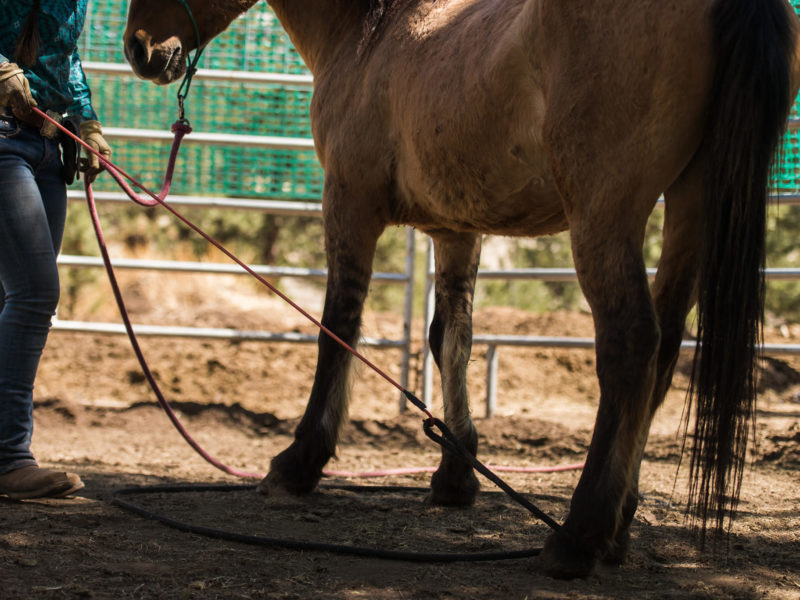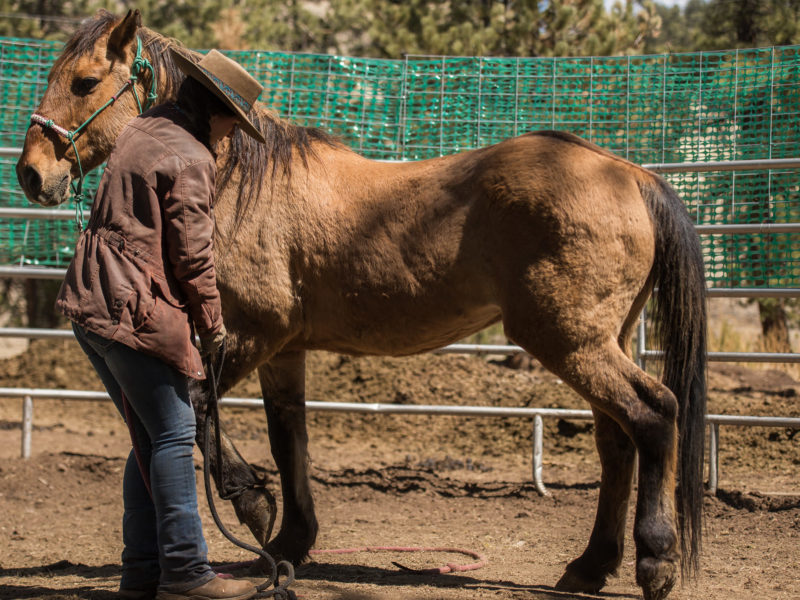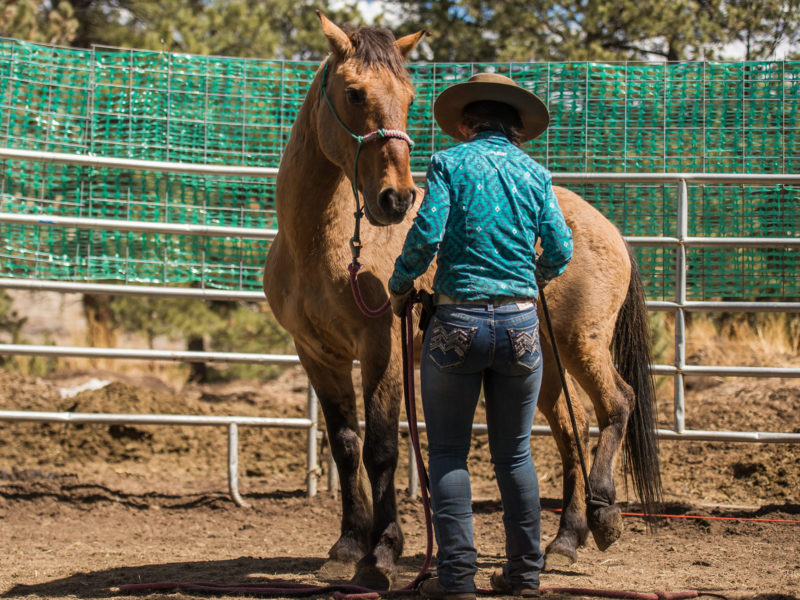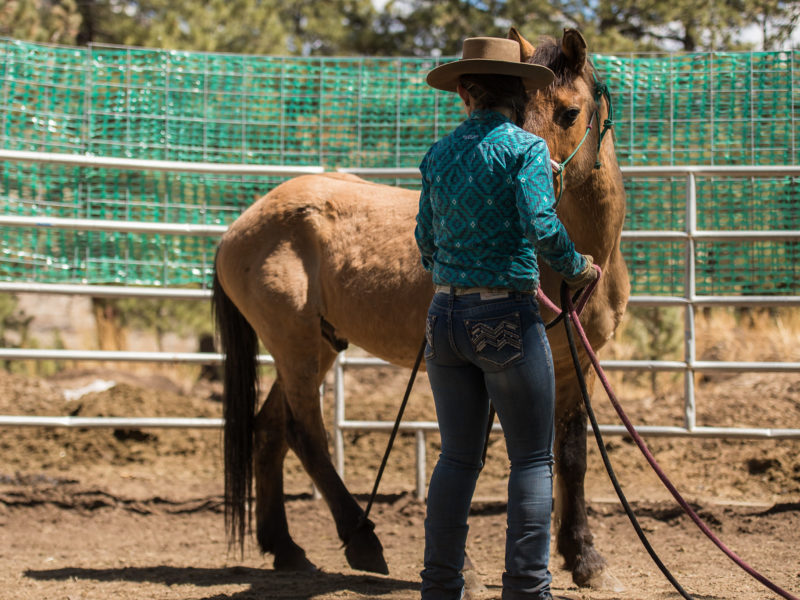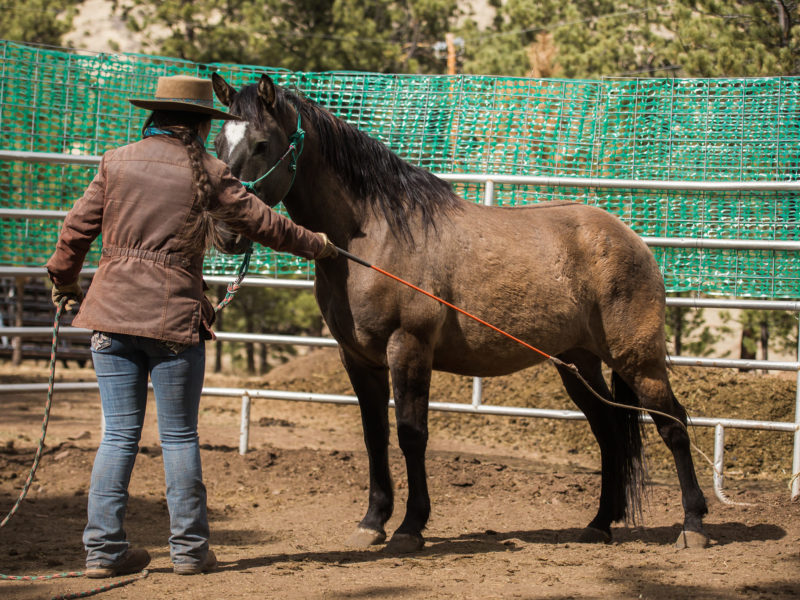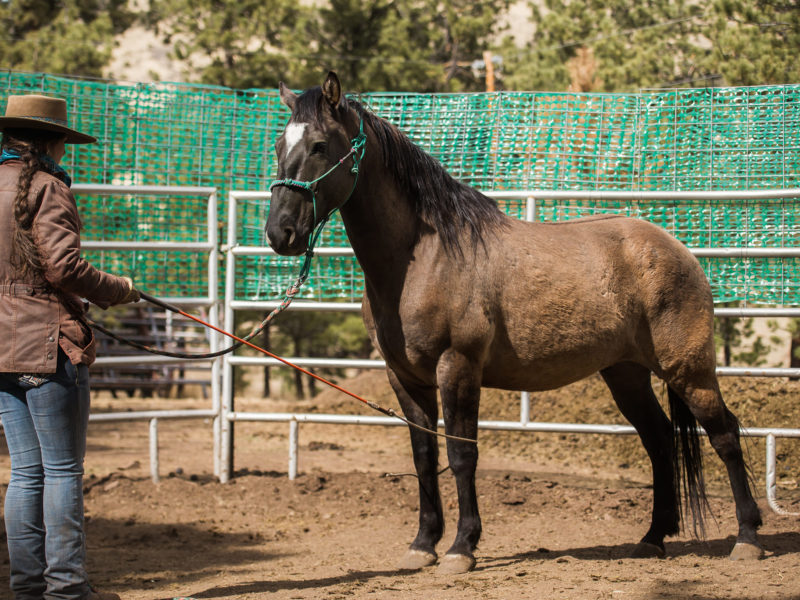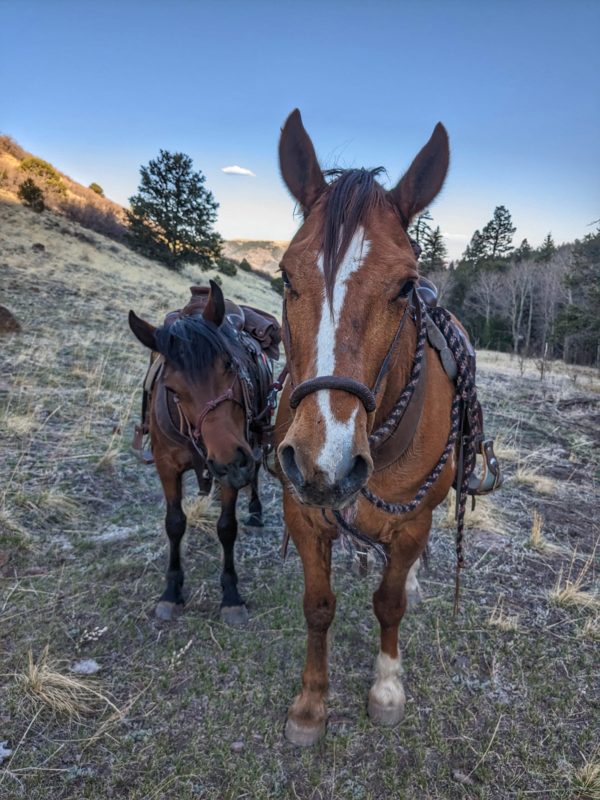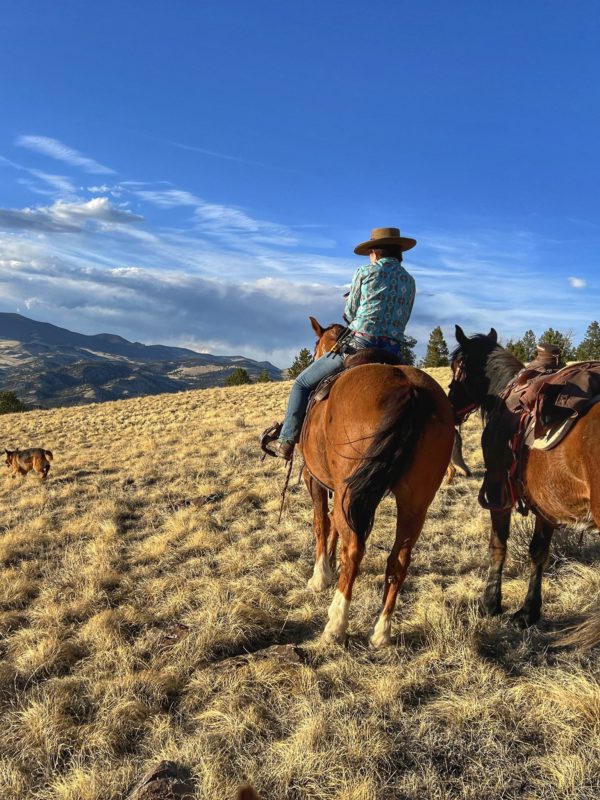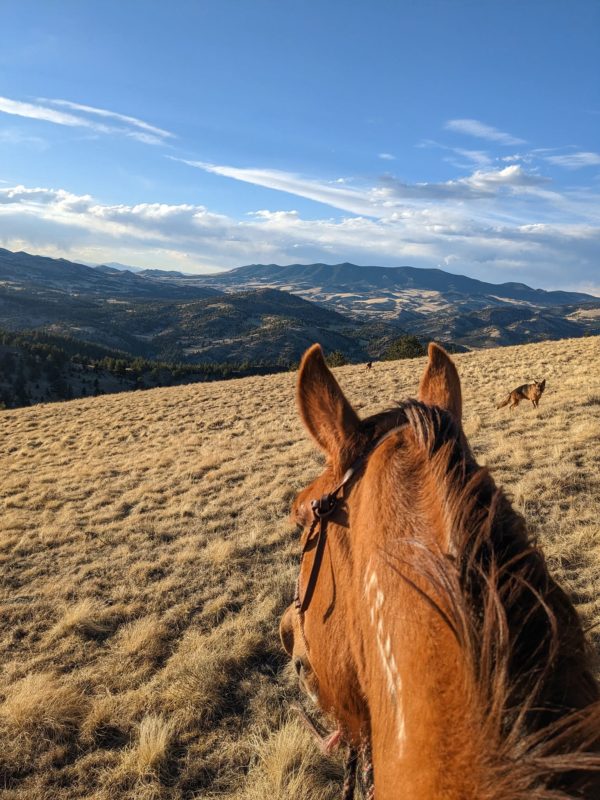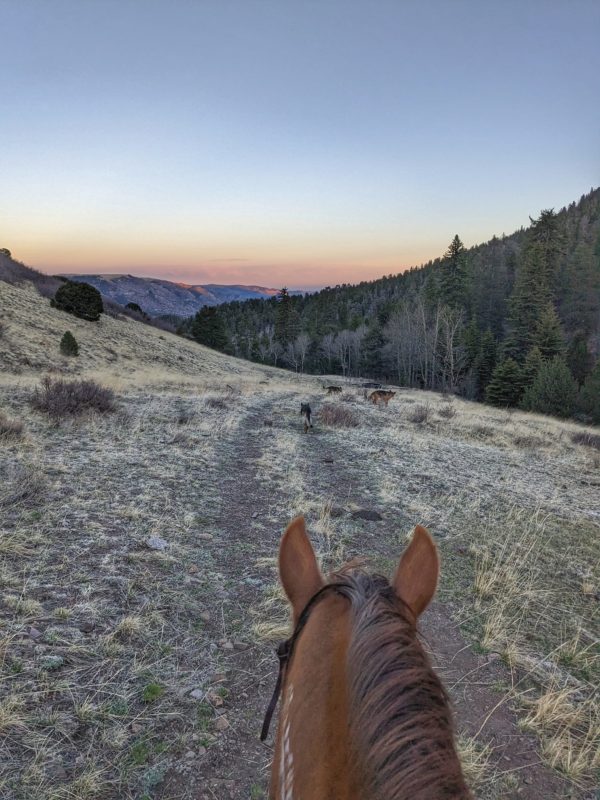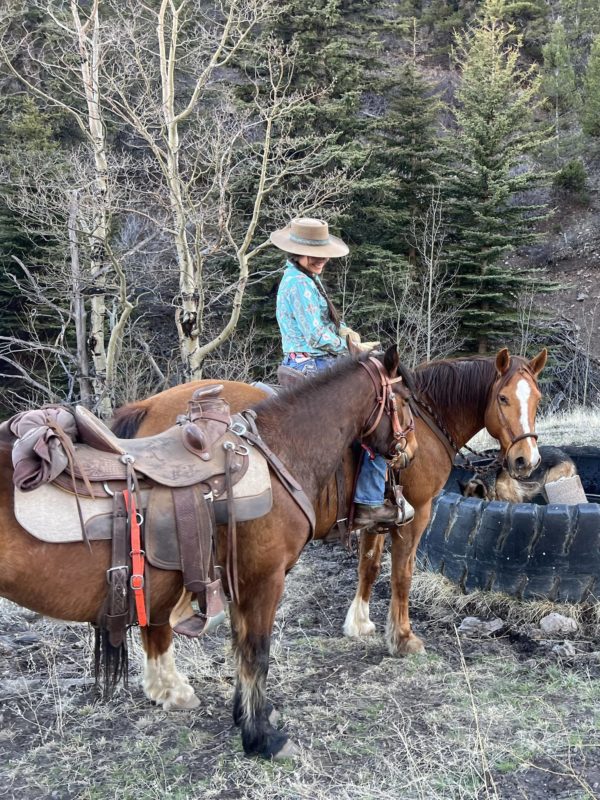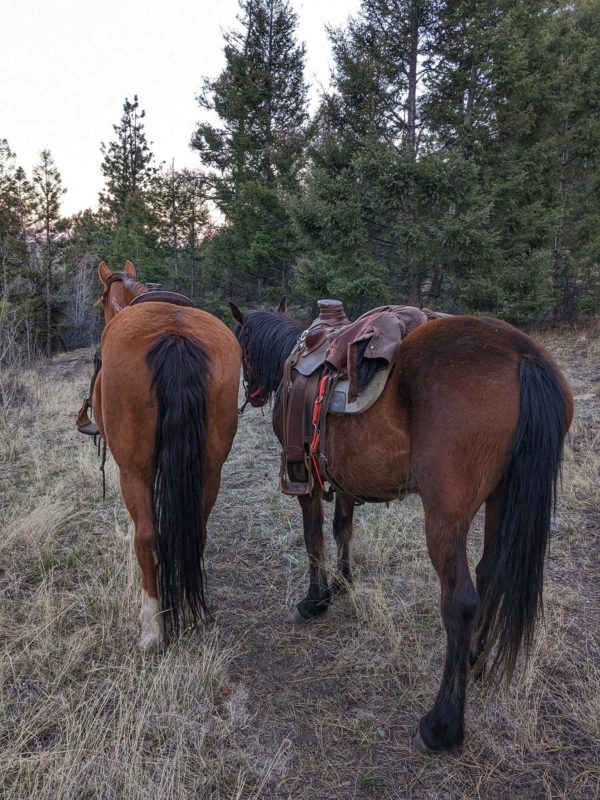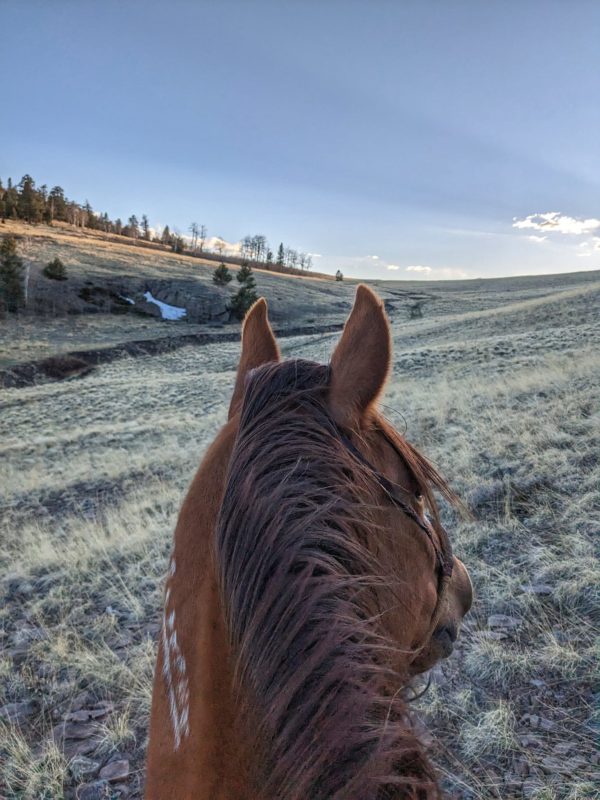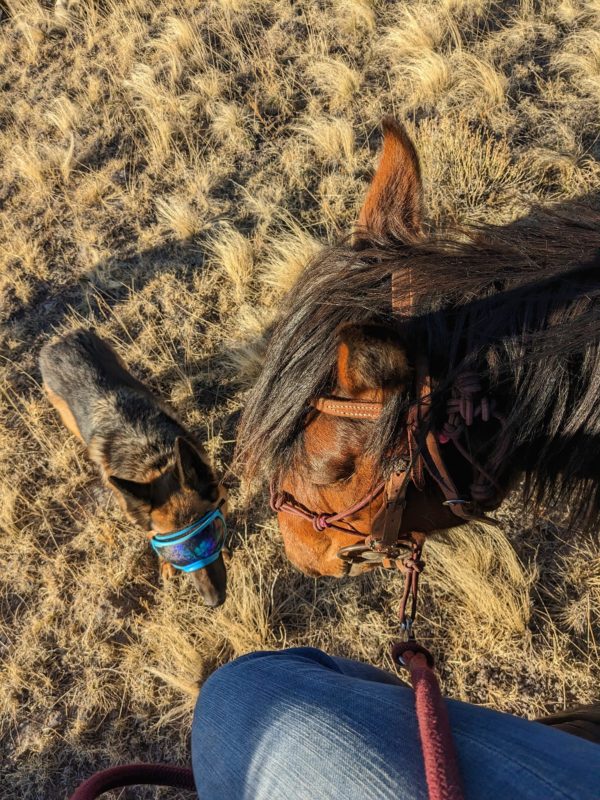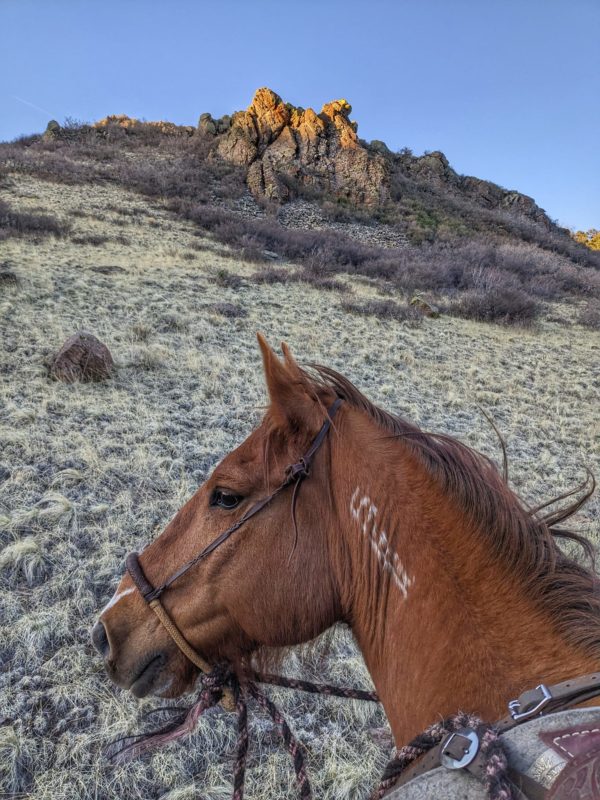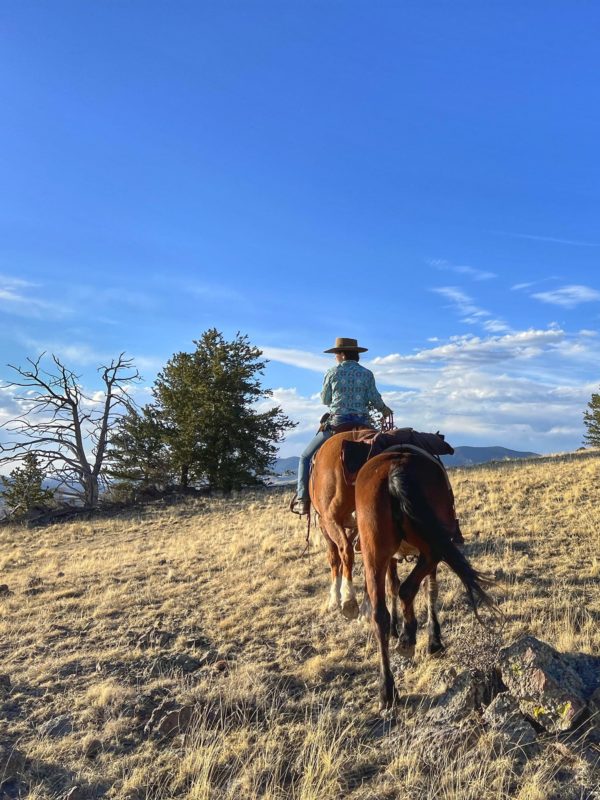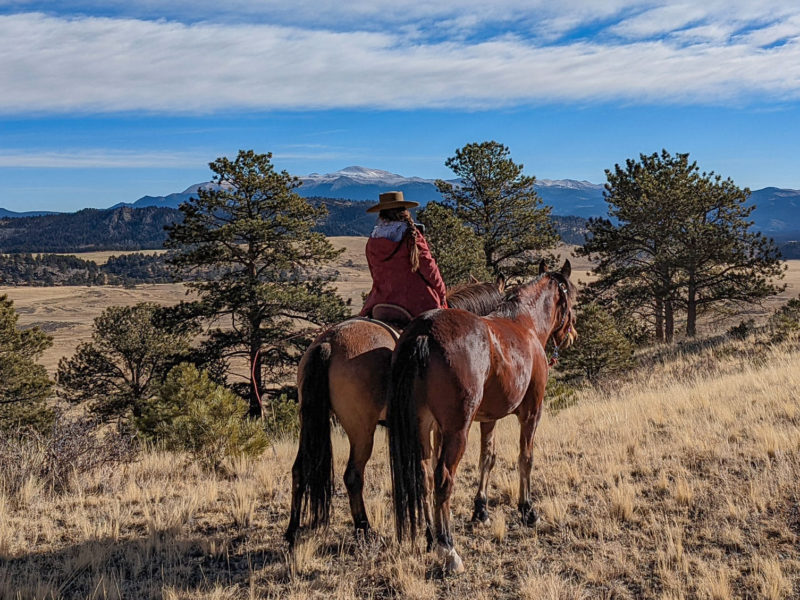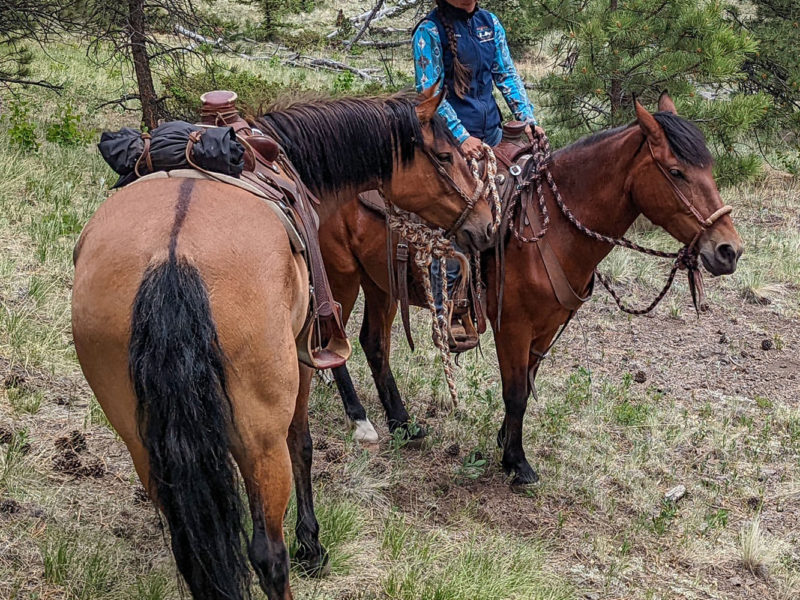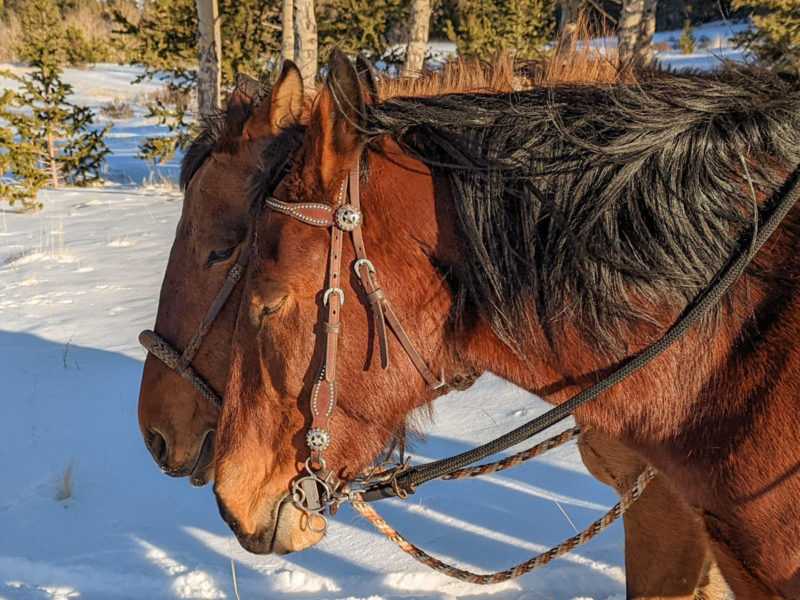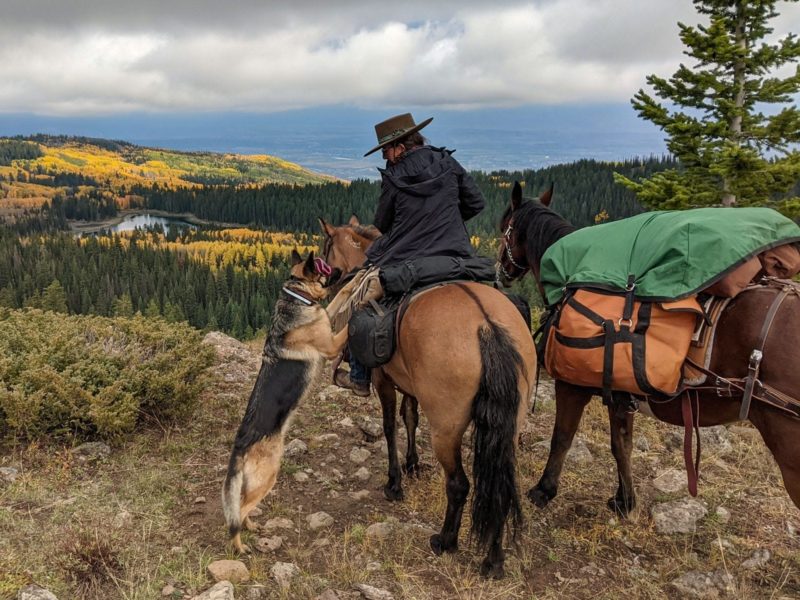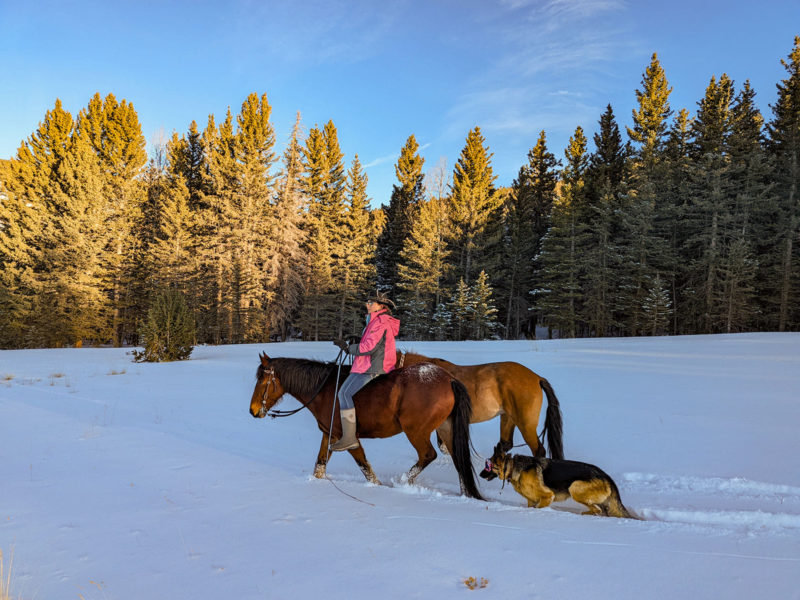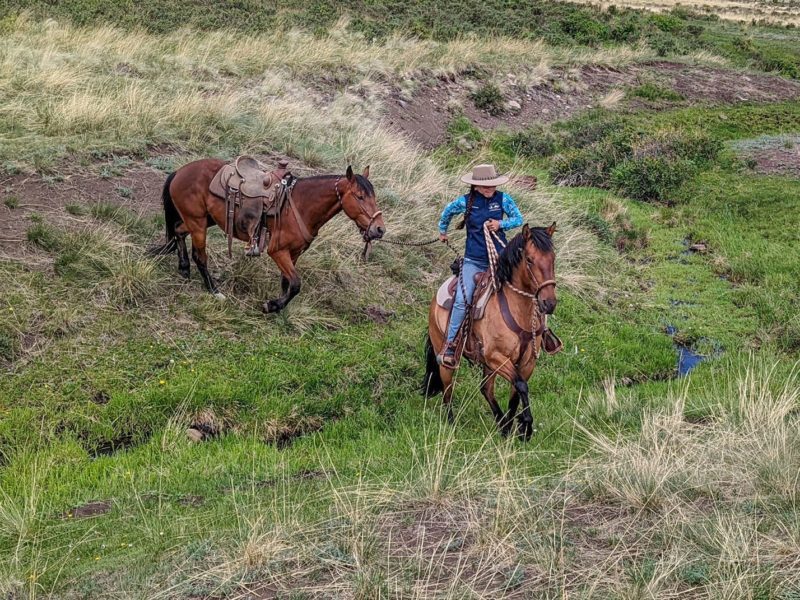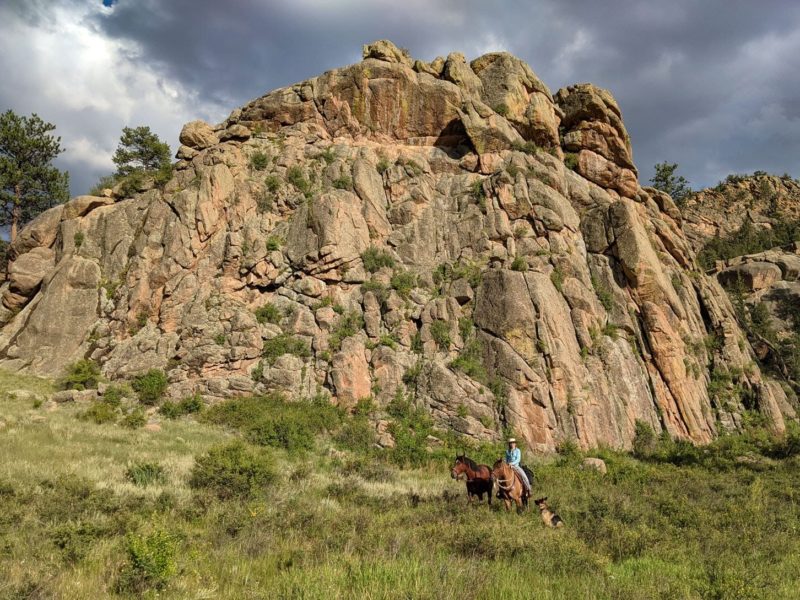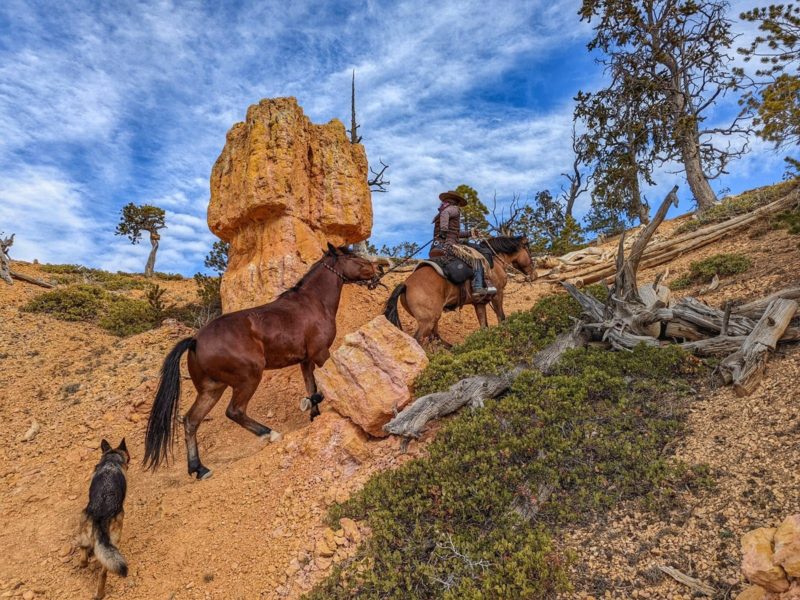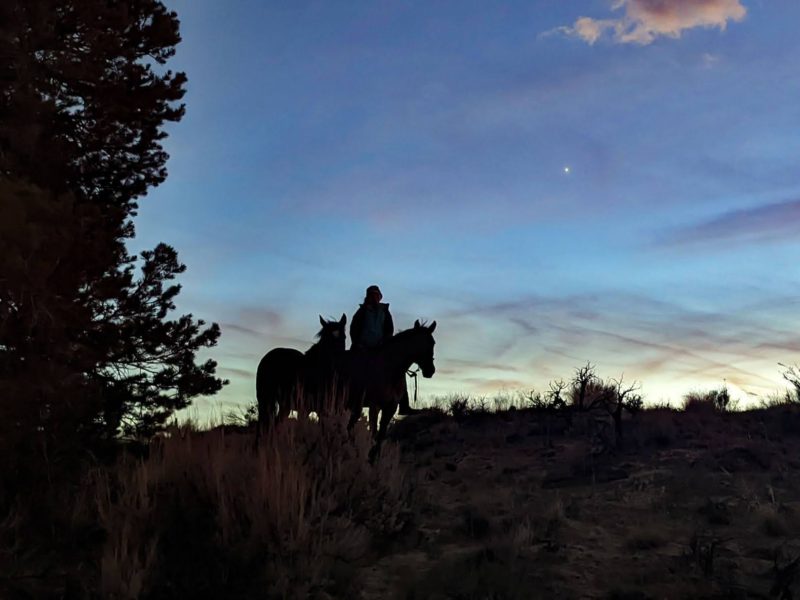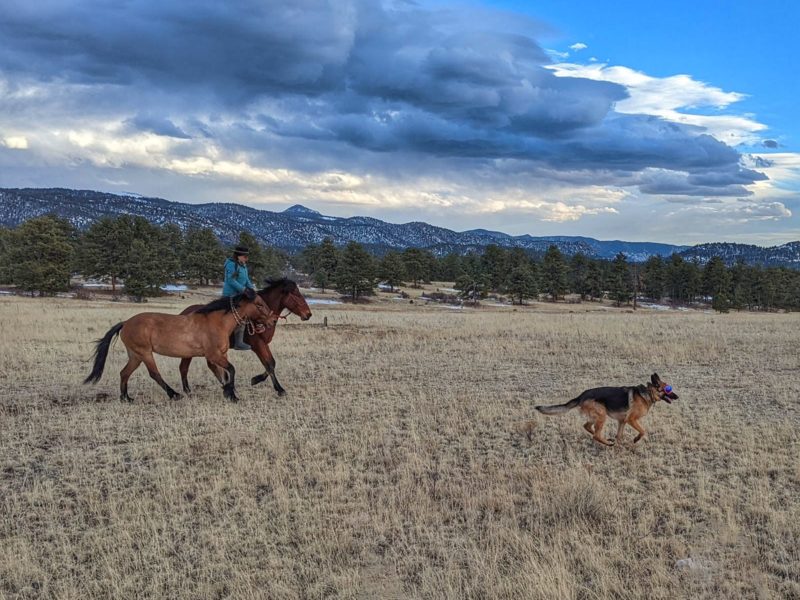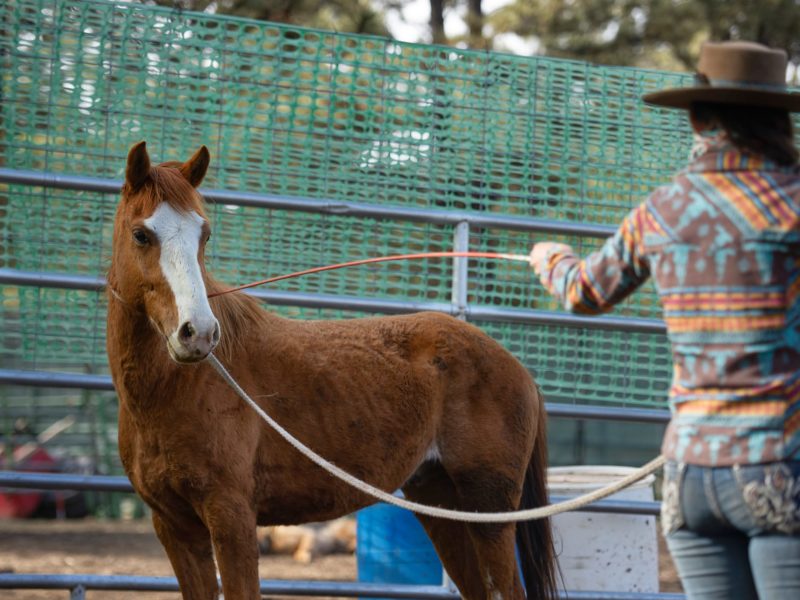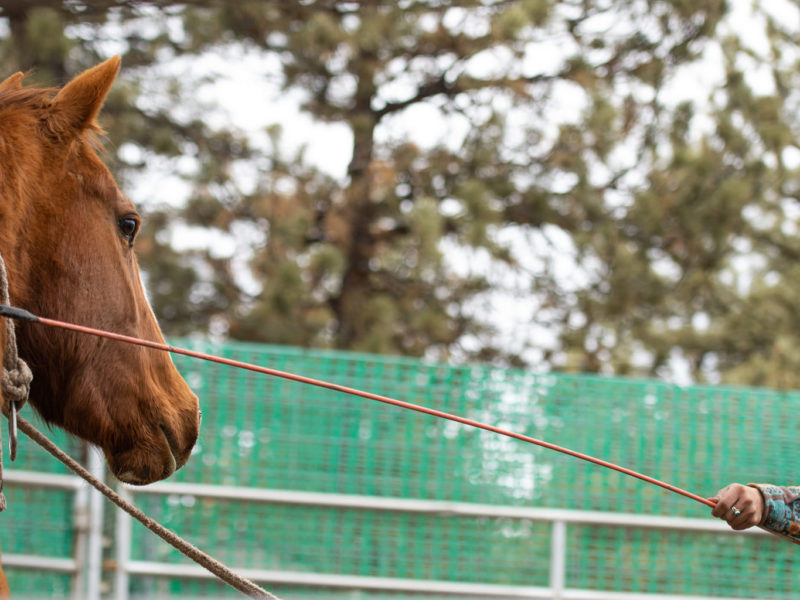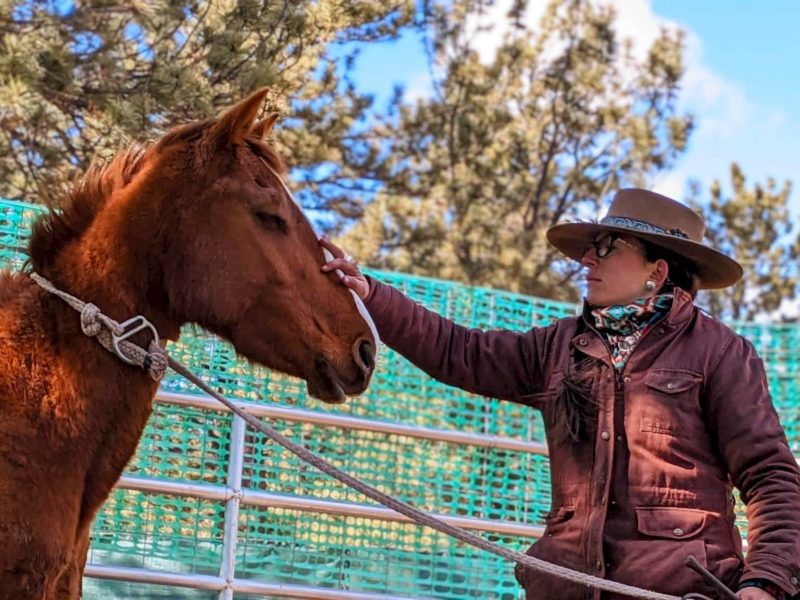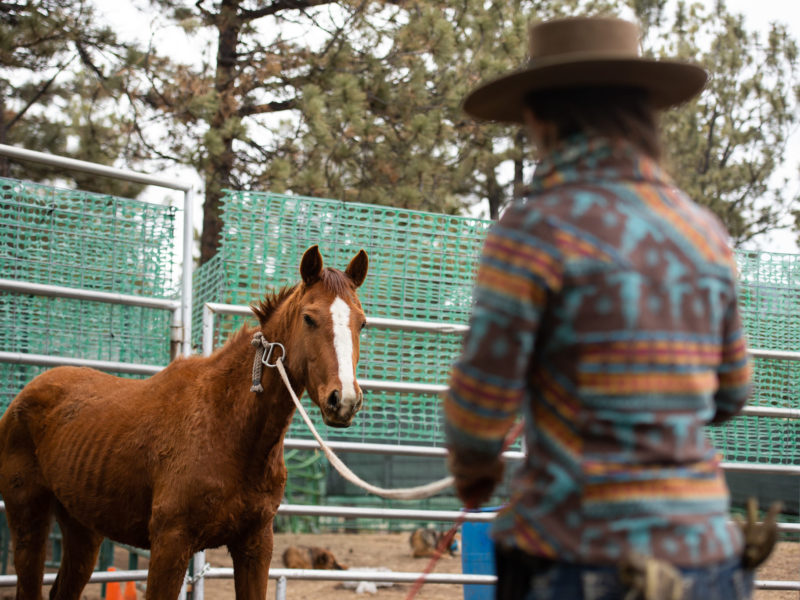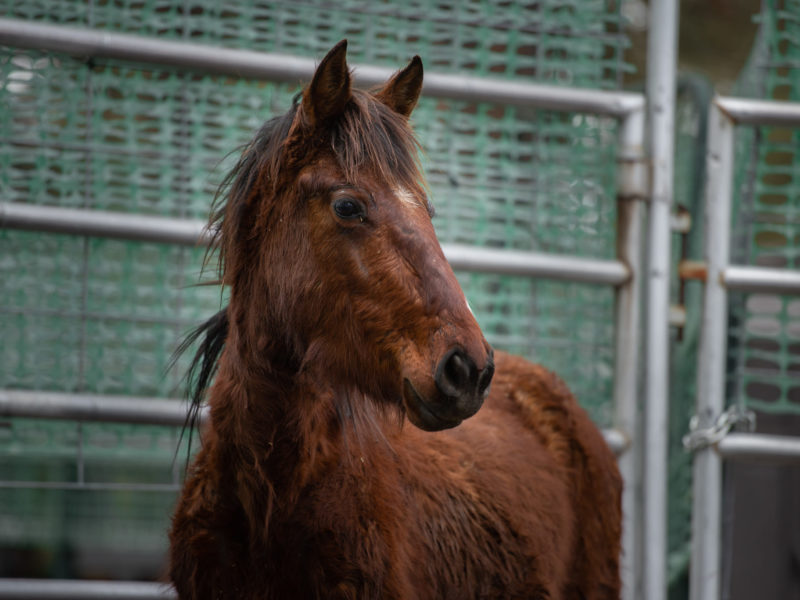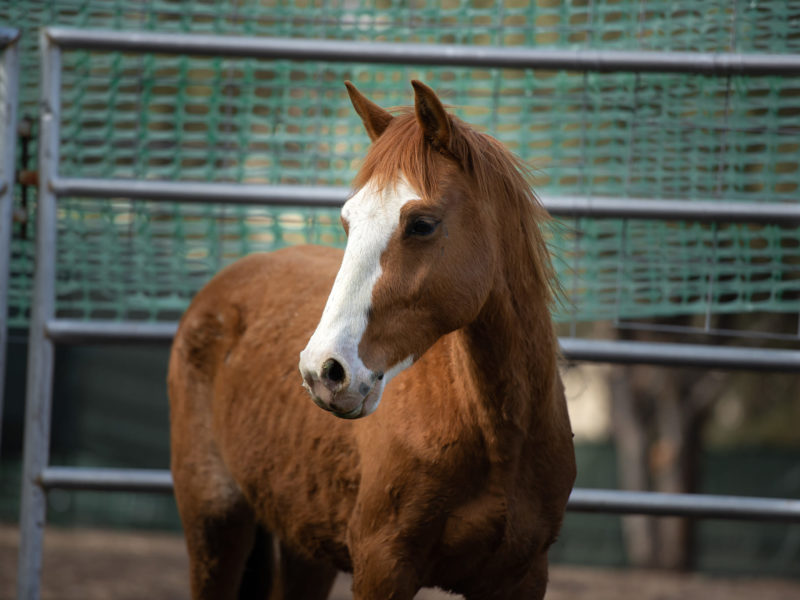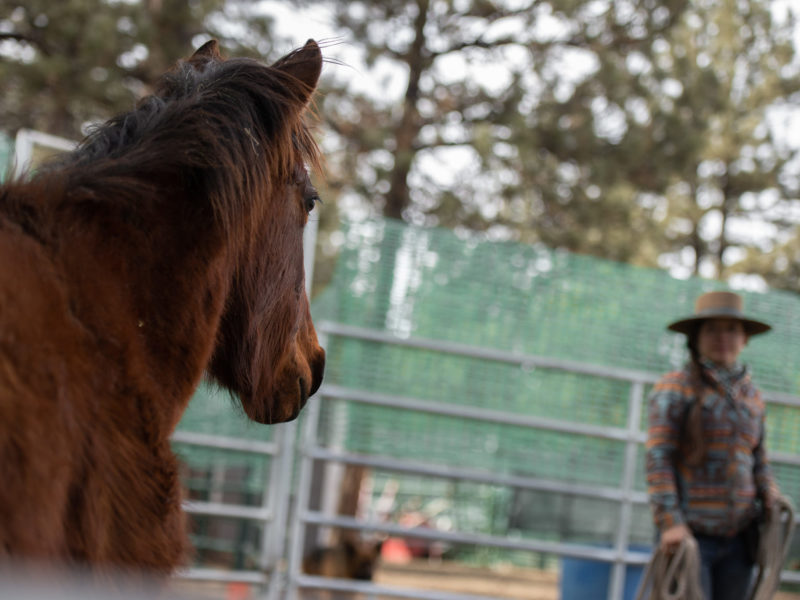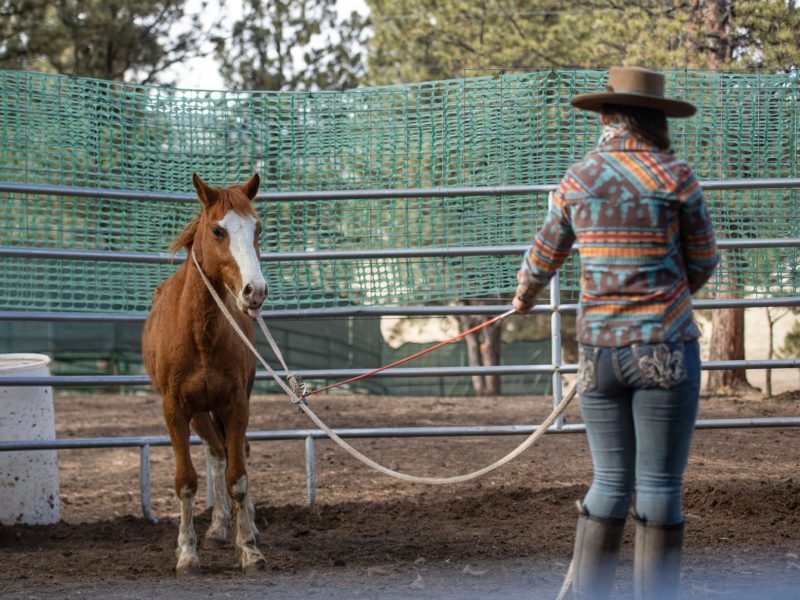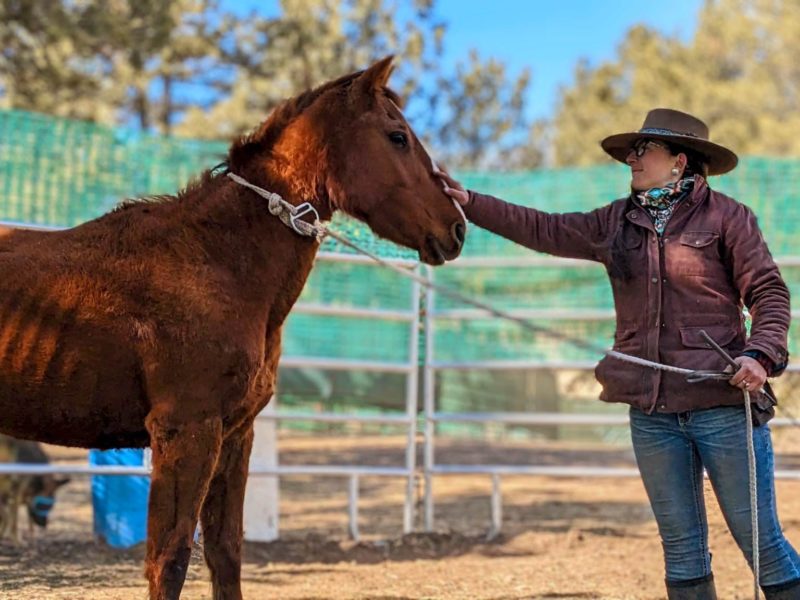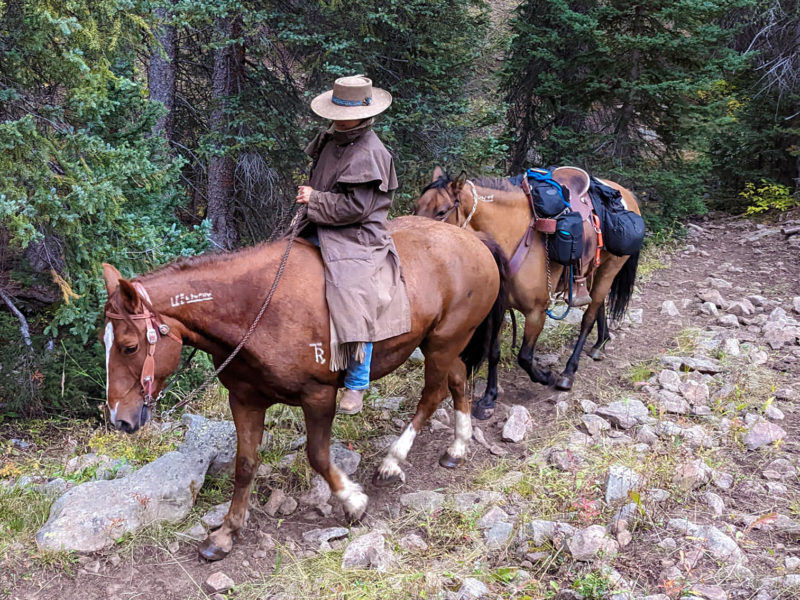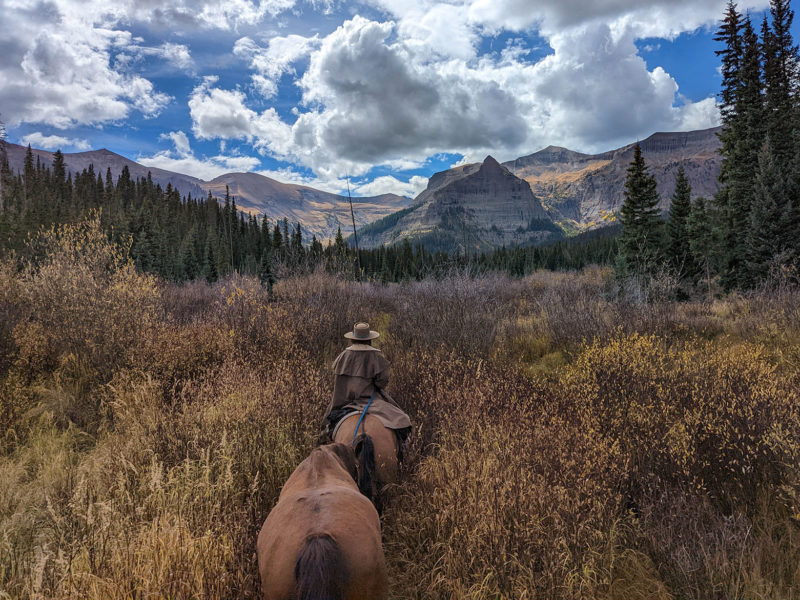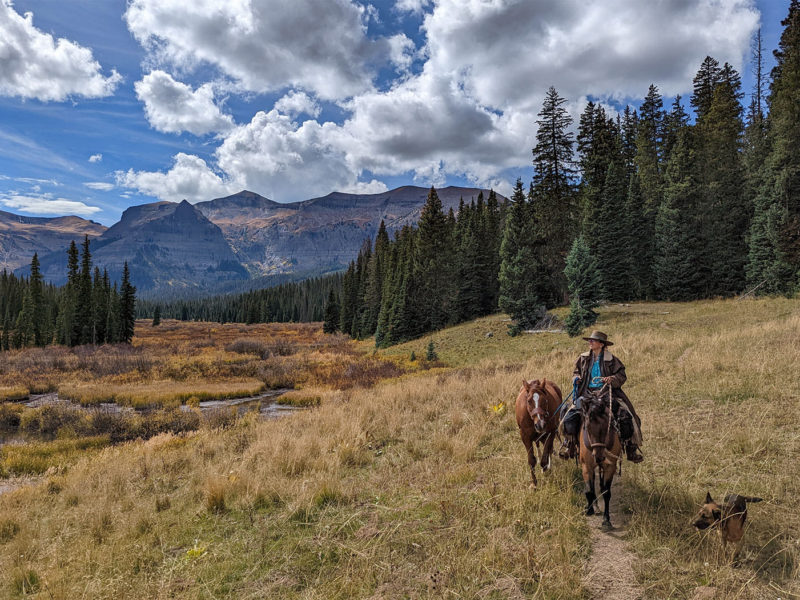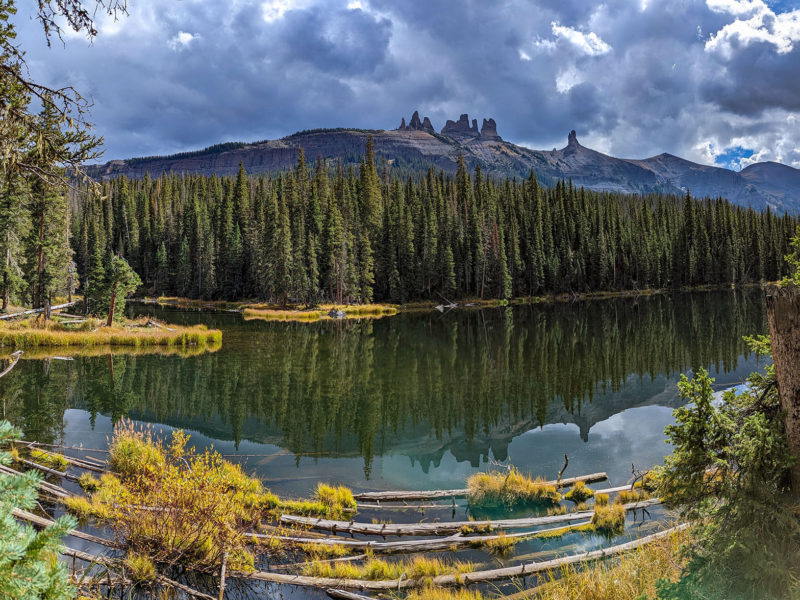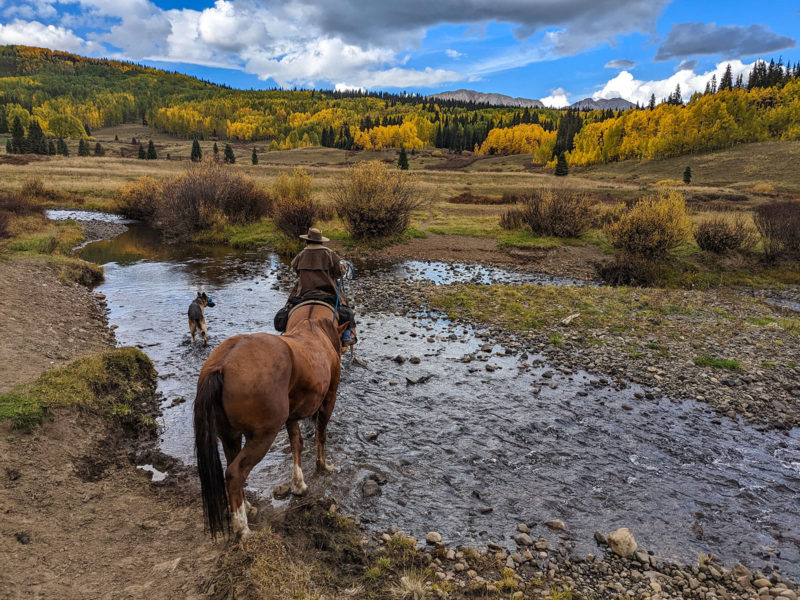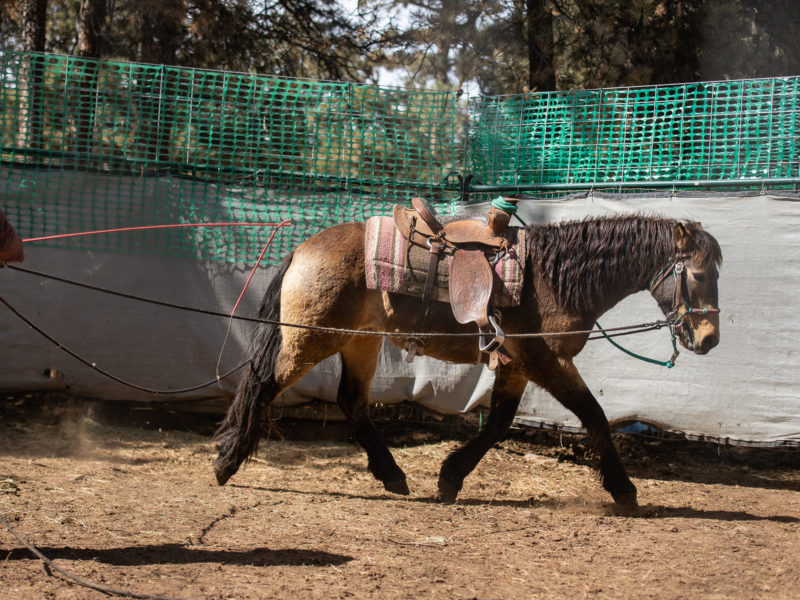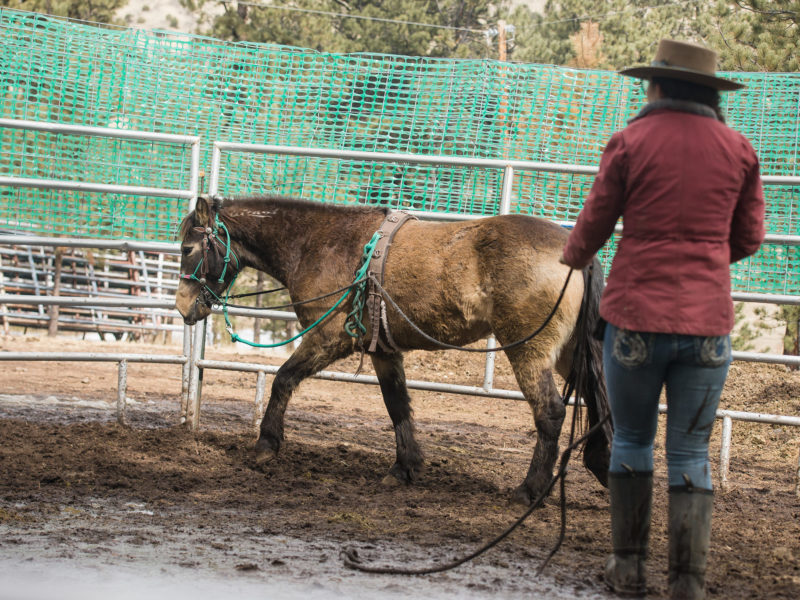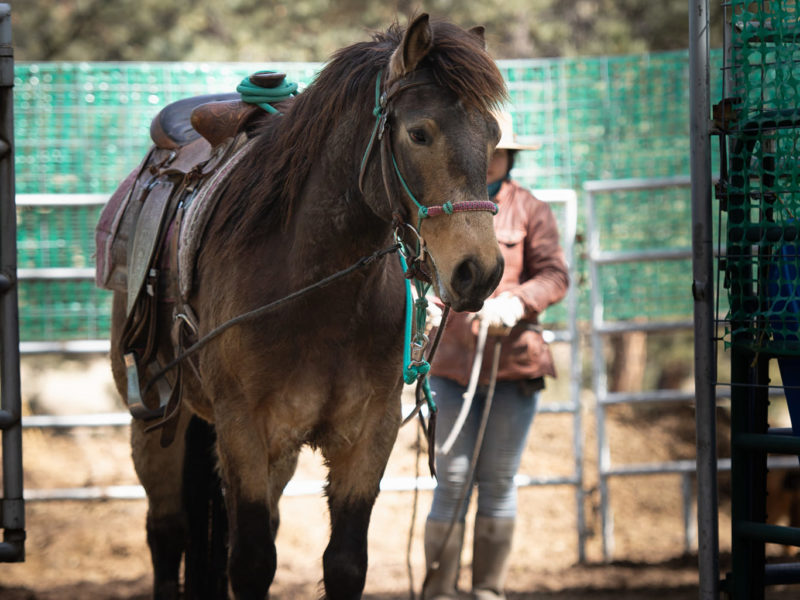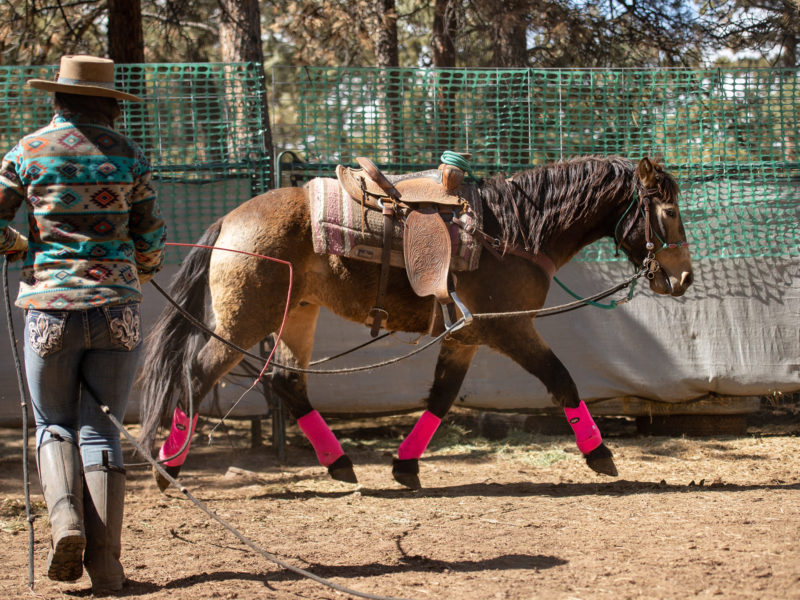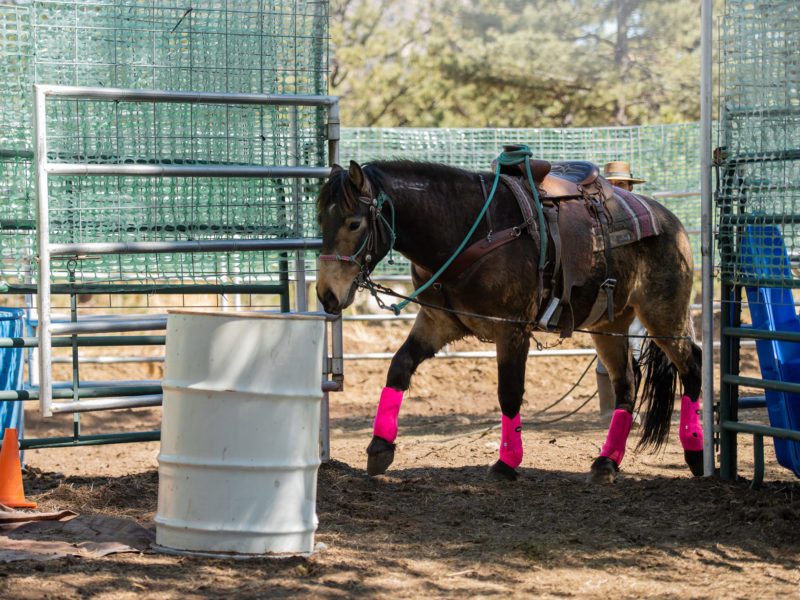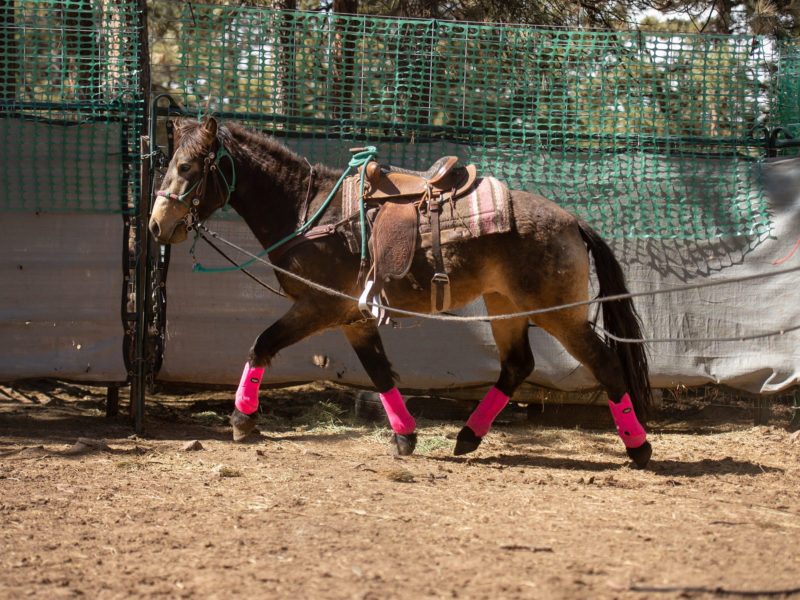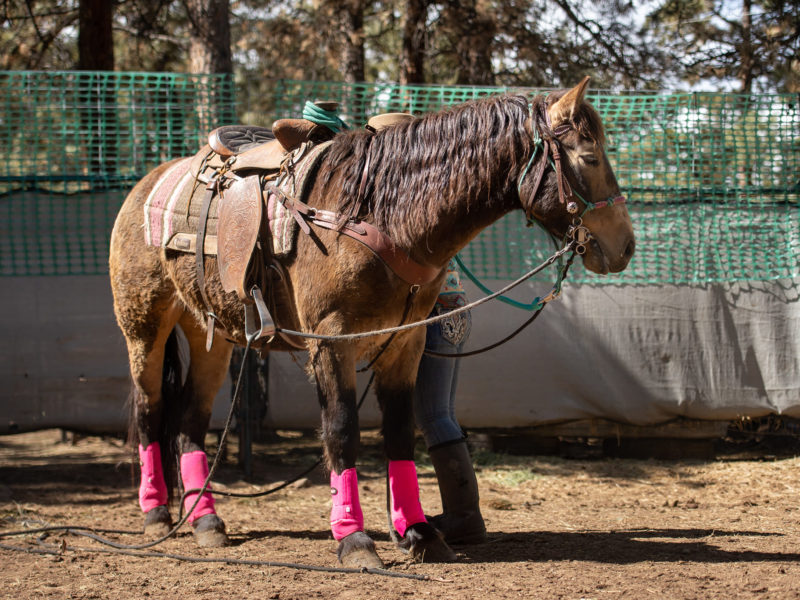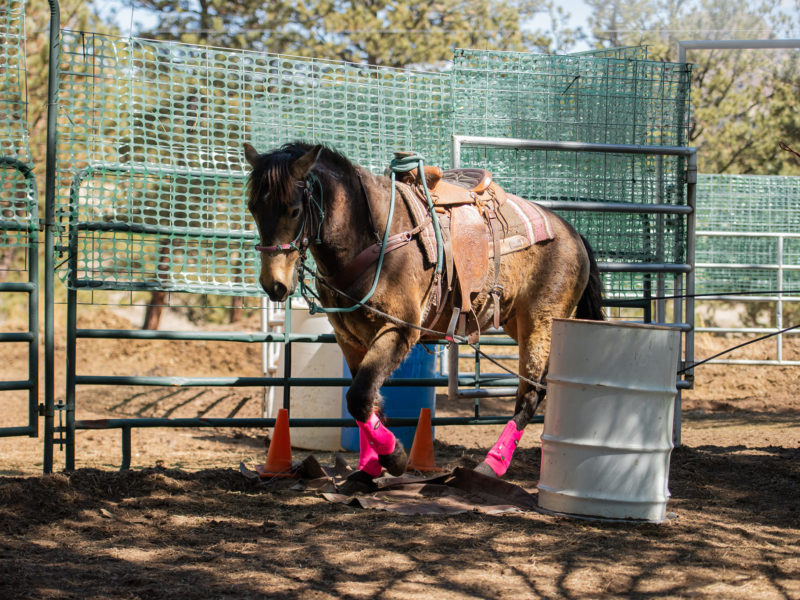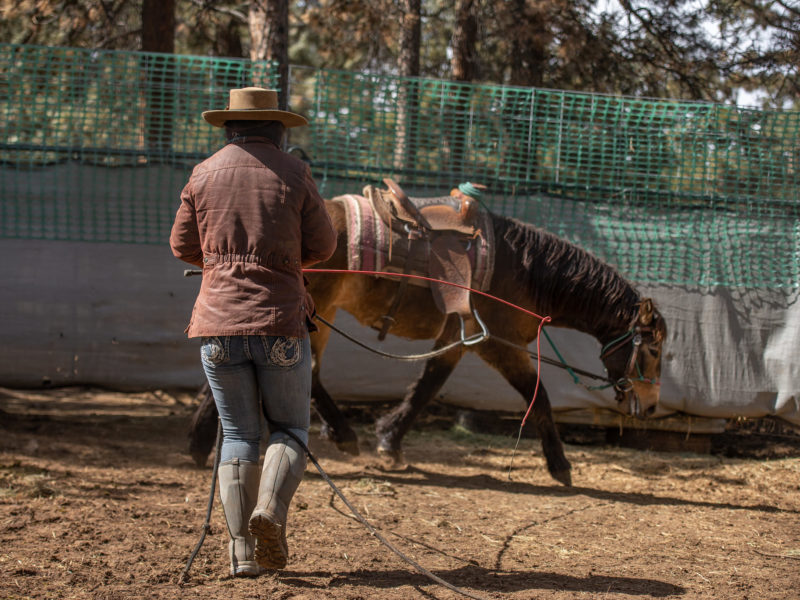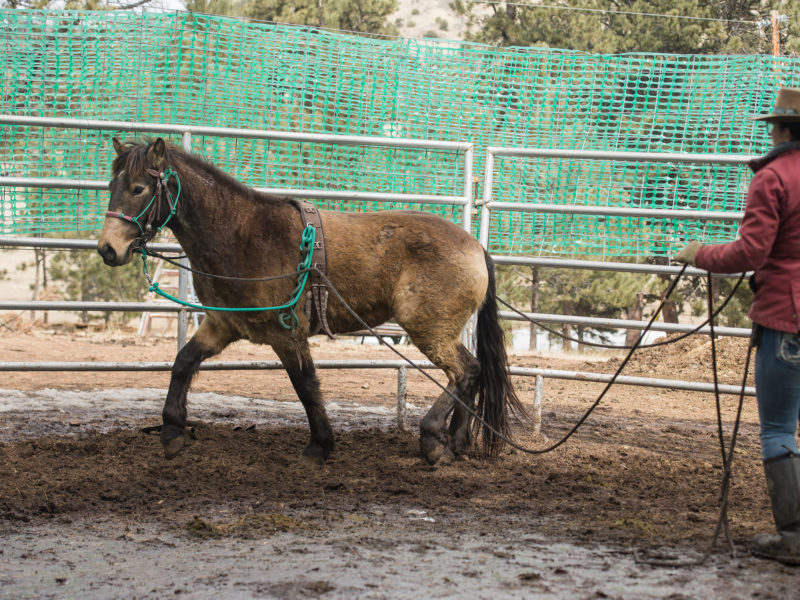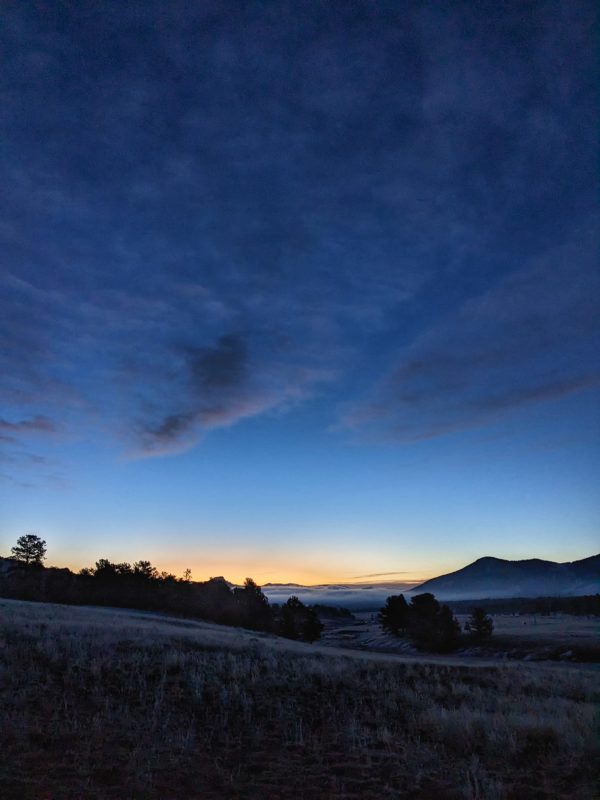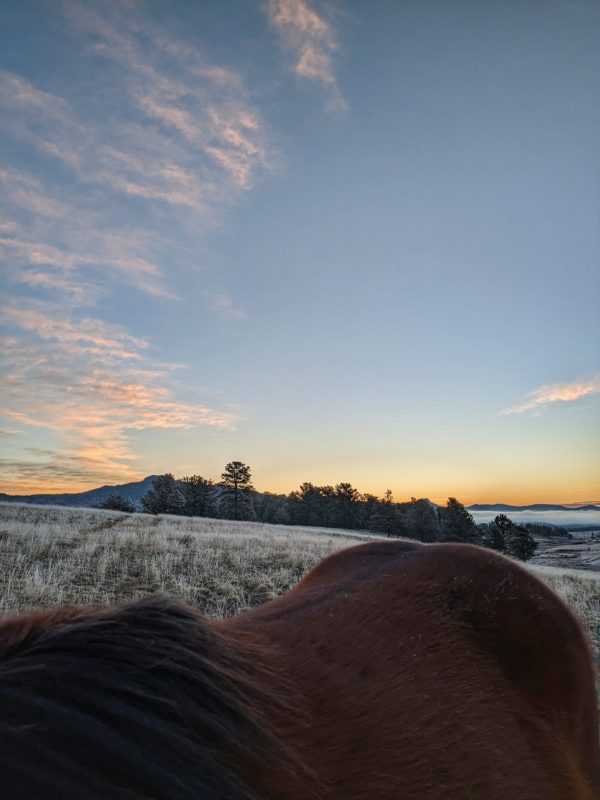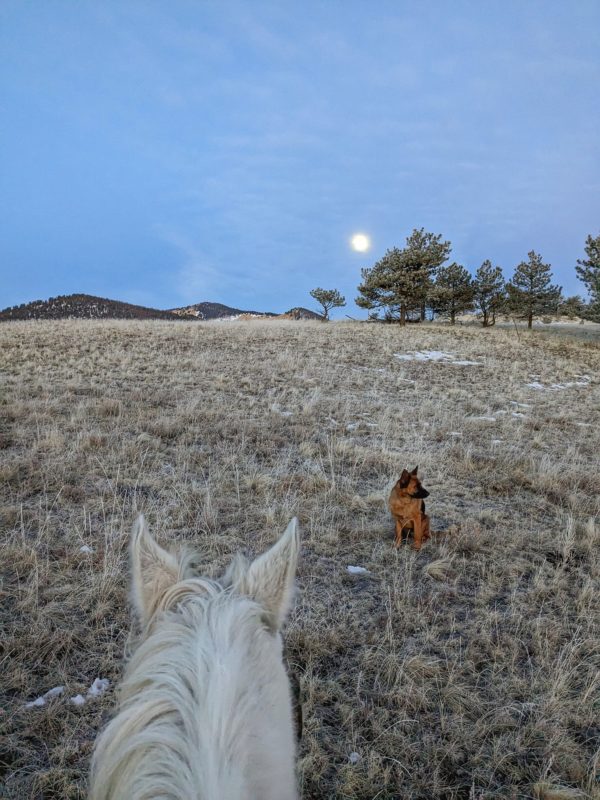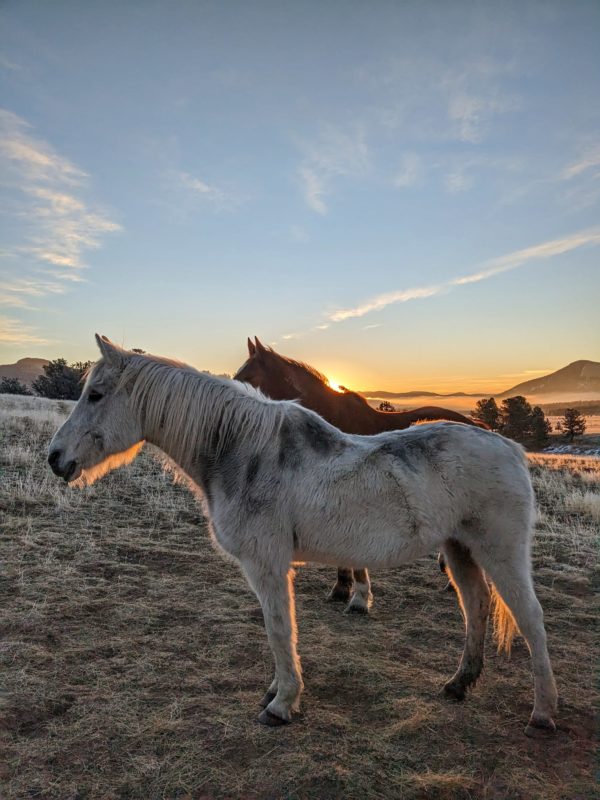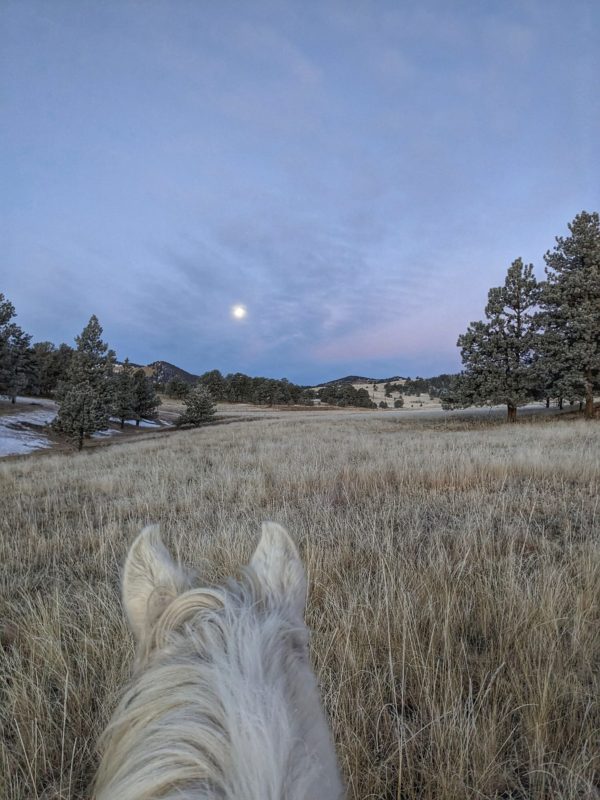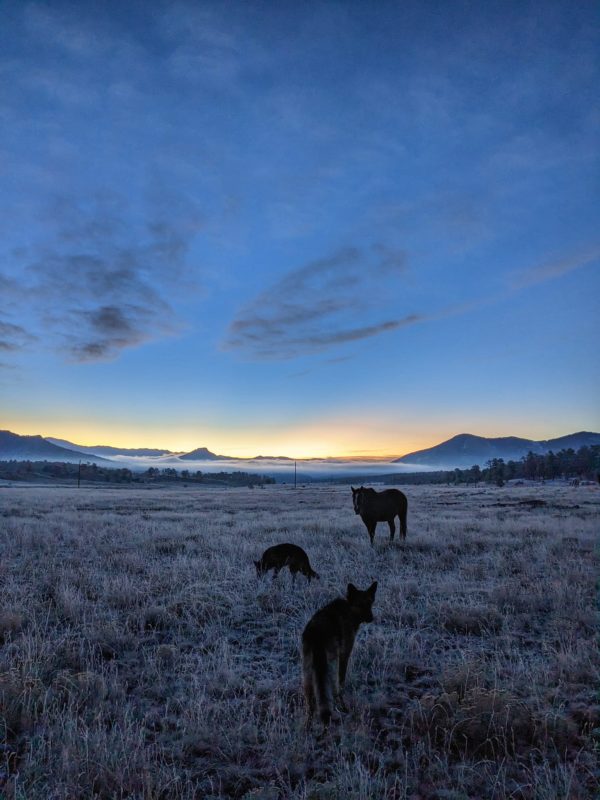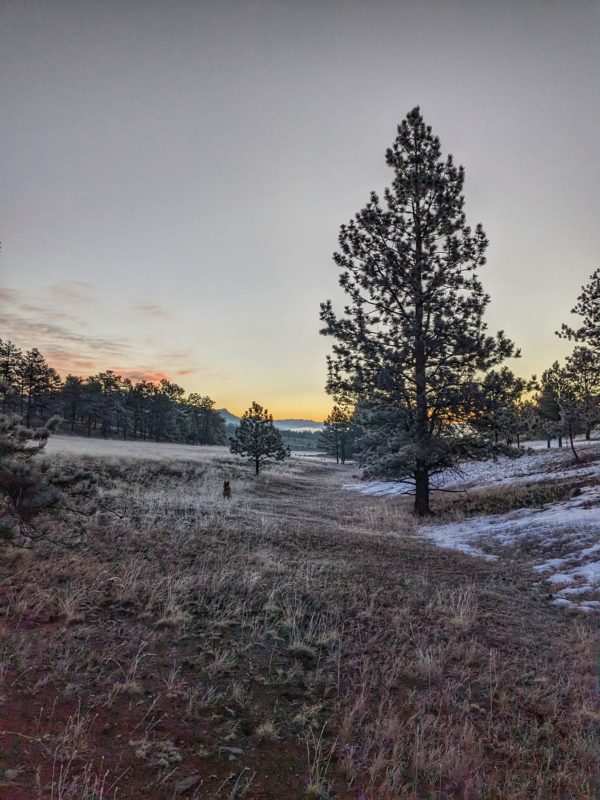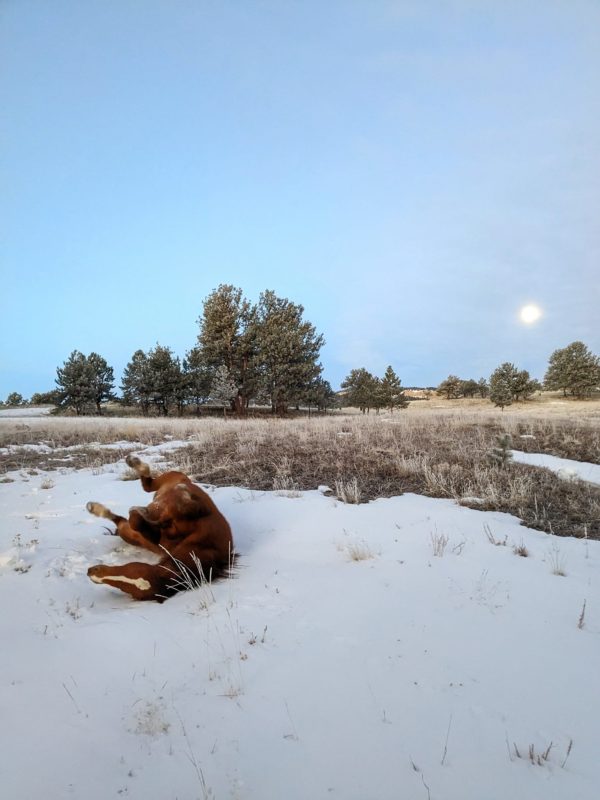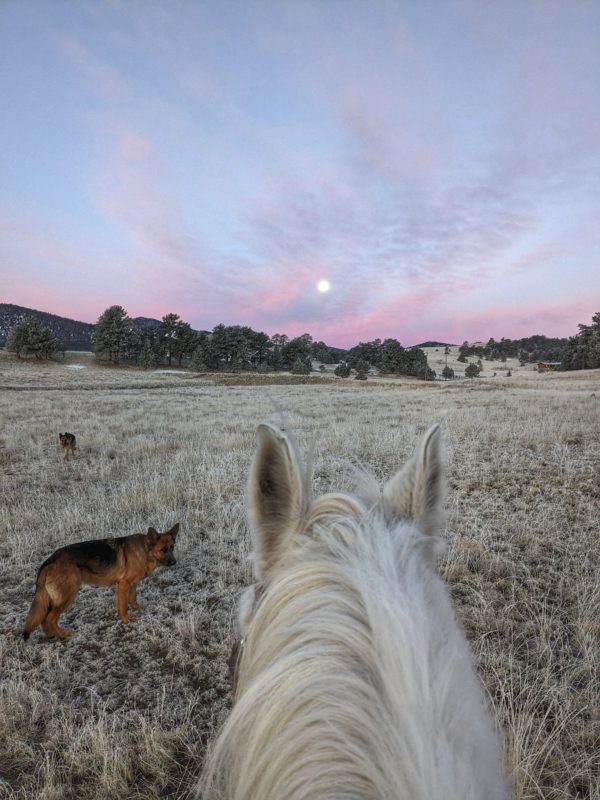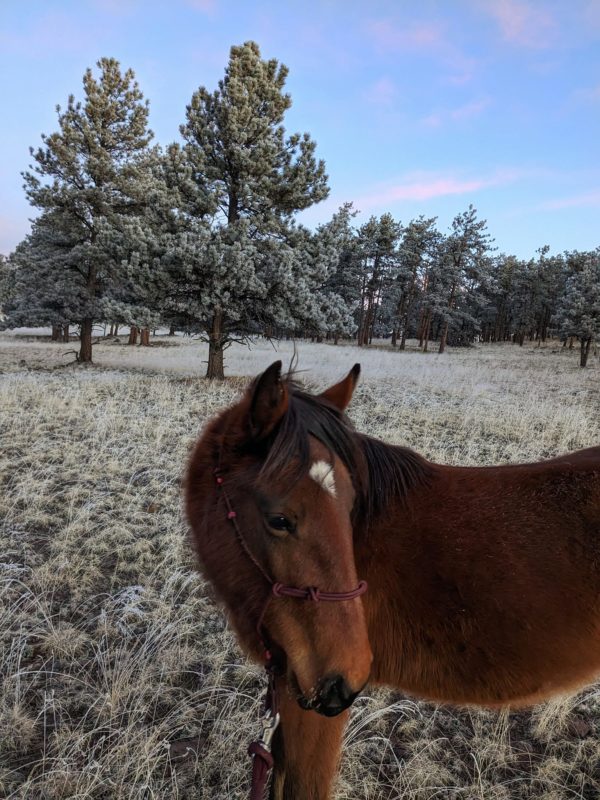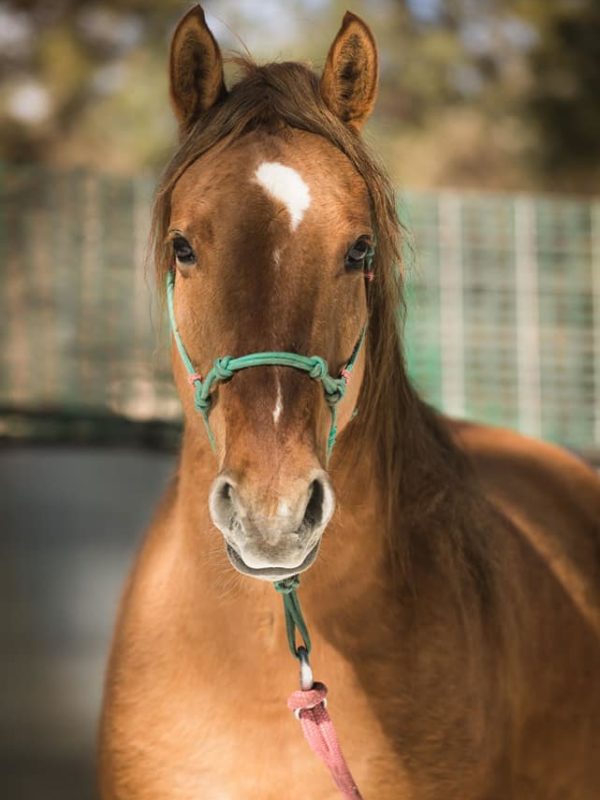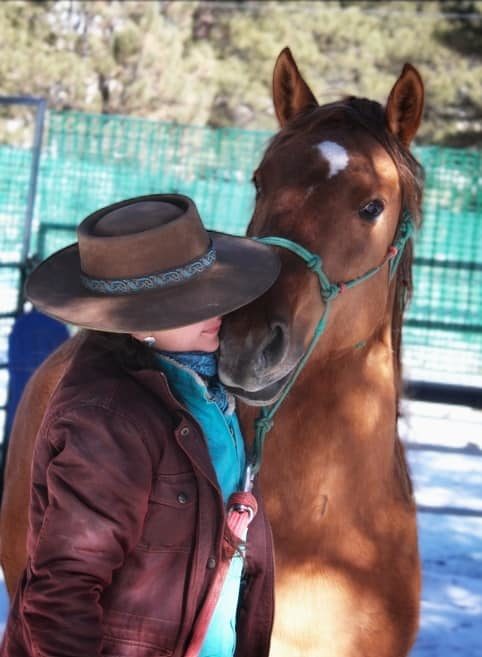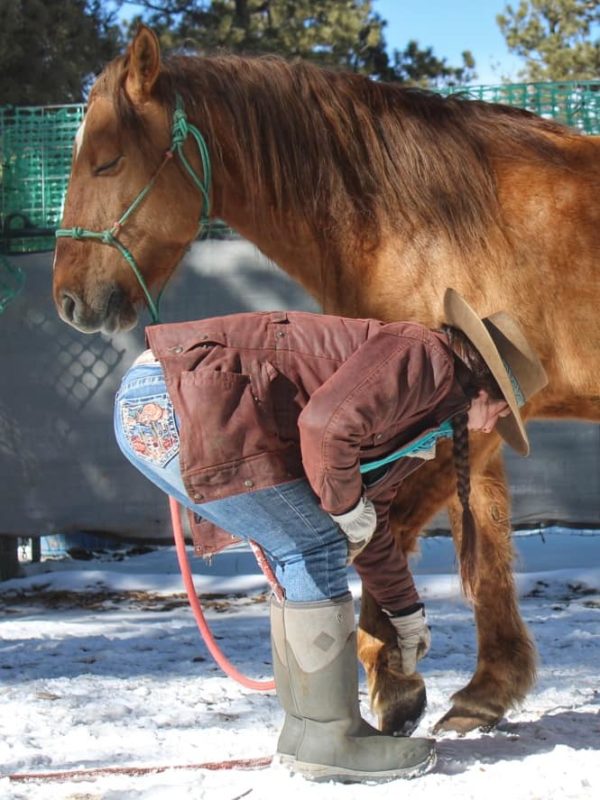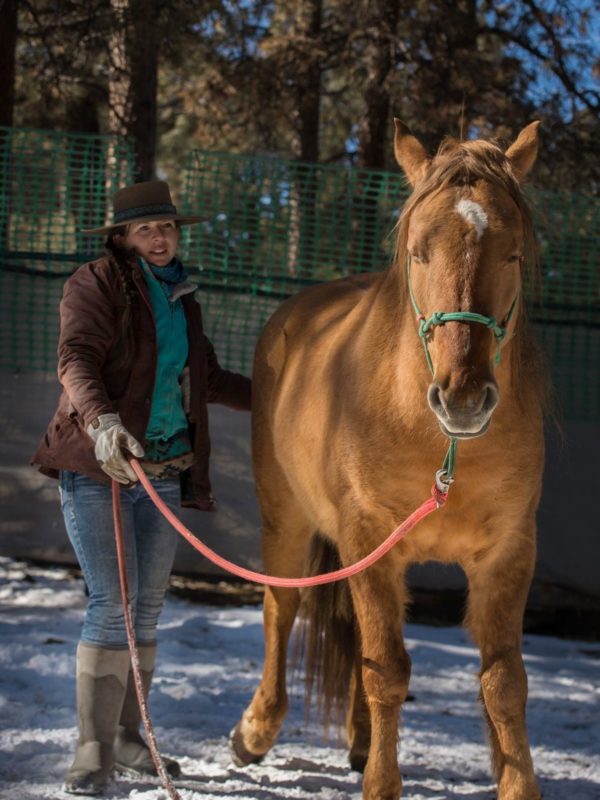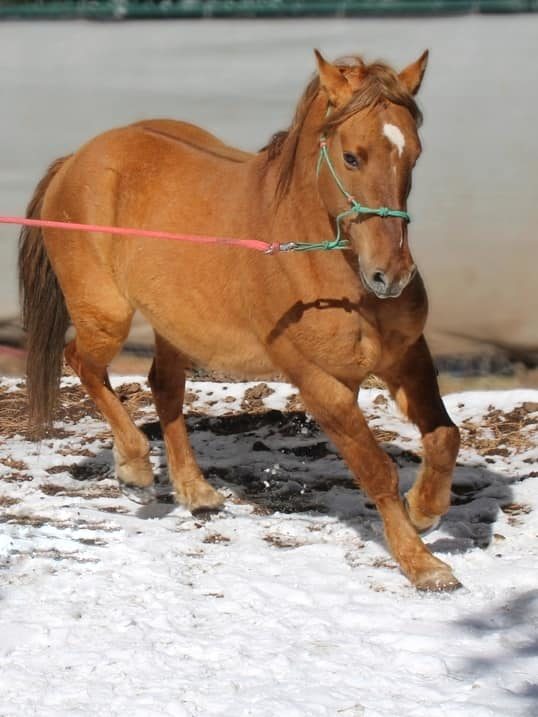One of my closest friends is moving out of state. We’re spending as much time together as we can before she leaves, so on Tuesday we met at one of our favorite riding spots, 3 Mustangs and 5 dogs in tow.
It was a hazy day (we’re getting smoke from the fires up in Canada) but sunny and the temperature was just right. We stopped to look at wildflowers, loped through mountain meadows, let the horses and dogs cool off in a pond and lay in the grass with the hobbled horses grazing nearby and the dogs jumping in and out of the water.
We crossed streams and climbed ridges, found beautifully twisted old trees and goofed around to our hearts’ content, just as happy and at peace as our wild-born horses and colorful pack of dogs.
A few short months ago a ride like this with Salt Wells Mustang gelding Tiny and DG Petrie would have looked a lot different. He’d have wanted to crow hop into the lope, fought his bit, tried to kick Petrie and been much less relaxed and responsive. Petrie would have been hesitant to follow along next to him on a loose rope, refused to lope in hand, gotten upset about saddling, and spooked at the running dogs.
I put time and focused attention into both of them over the winter, continuously evaluating what was and wasn’t working and making adjustments accordingly. There’s still a lot of room for growth but we’re getting along much better than we did and are having a lot more fun together.
It makes me smile to watch big ol’ Tiny run in a hackamore, with slack in the reins, the feisty filly beside us, as I’m yelling at the dogs to get out of the way (that part hasn’t changed).
With Lacy still out and Blanca too old for big adventures, I was dreading rather than looking forward to summer, longer rides and pack trips. After months of work on myself and with these two Mustangs I can honestly say I’m excited for it now.
On our way back from our ride we drove through our tiny little town just as school was about out. I unloaded not so tiny Tiny in front of our very tiny school so he could say hi to the students before they got on the bus. He even gave a couple of the teachers rides, in a halter in the school parking lot. I’m glad to have him be part of our Wild Horse Outreach & Advocacy Ambassador herd.
Just because something doesn’t start out pretty, or easy, or we mess up or don’t trust our horse at first, or we doubt ourselves, that doesn’t mean it can’t change and get better. Time, effort, persistence and a willingness to learn, ask for help, adjust and reassess can make a huge difference. Mustangs make us better (horse) people if we let them, and I’m so very grateful for that.

